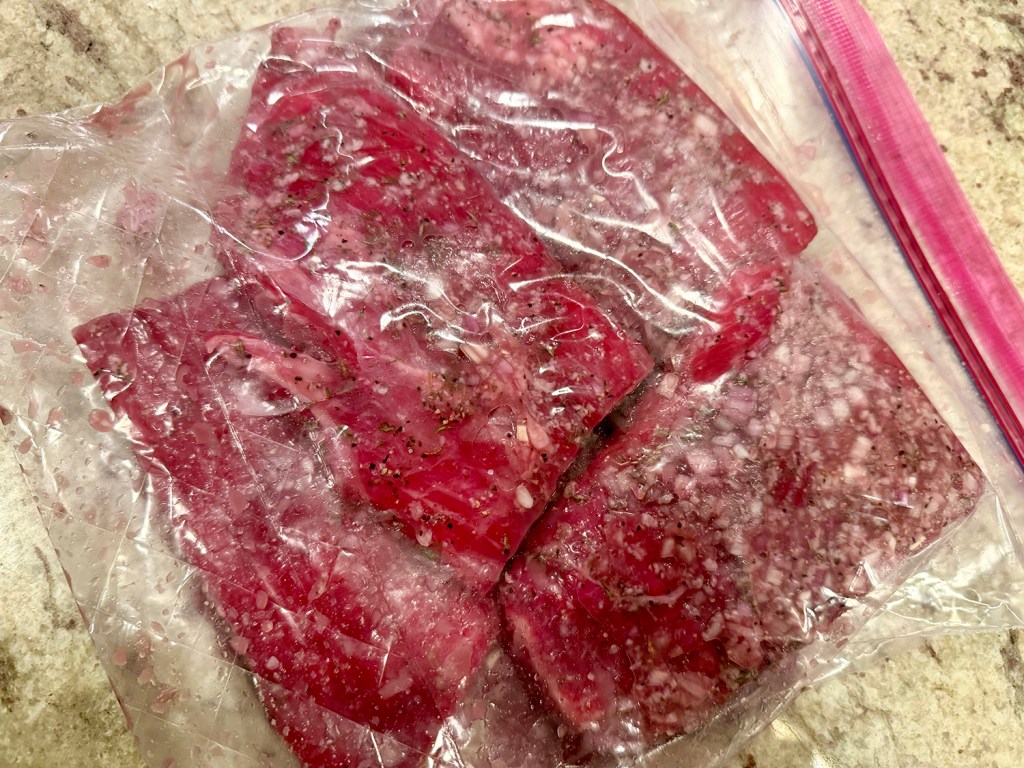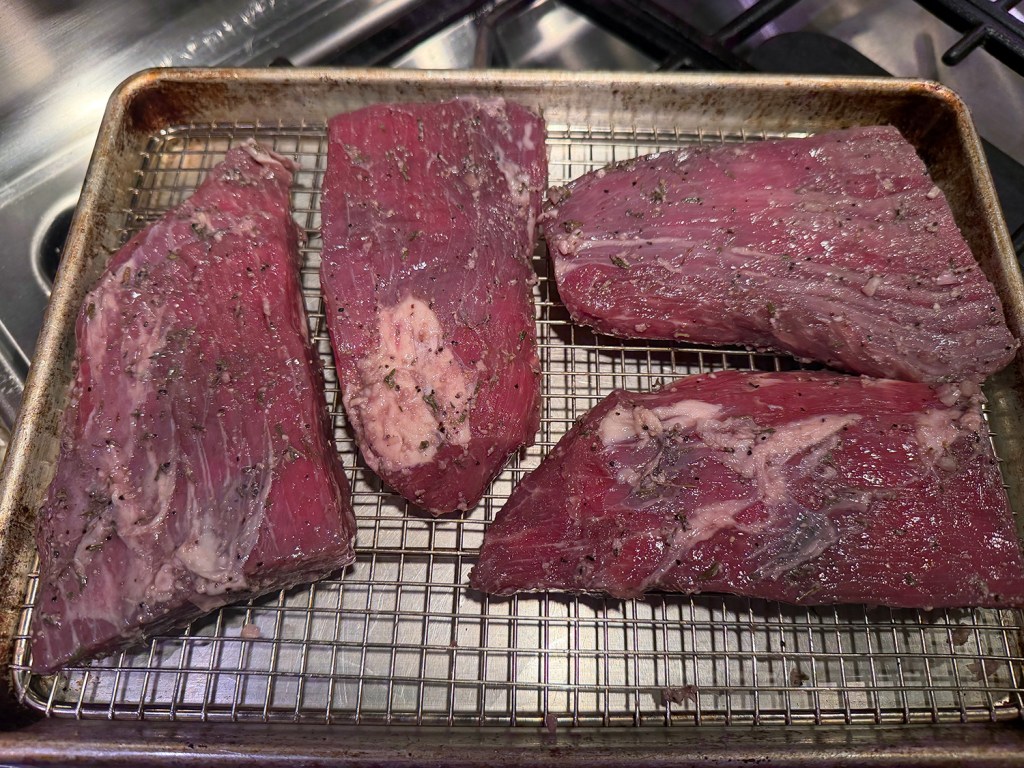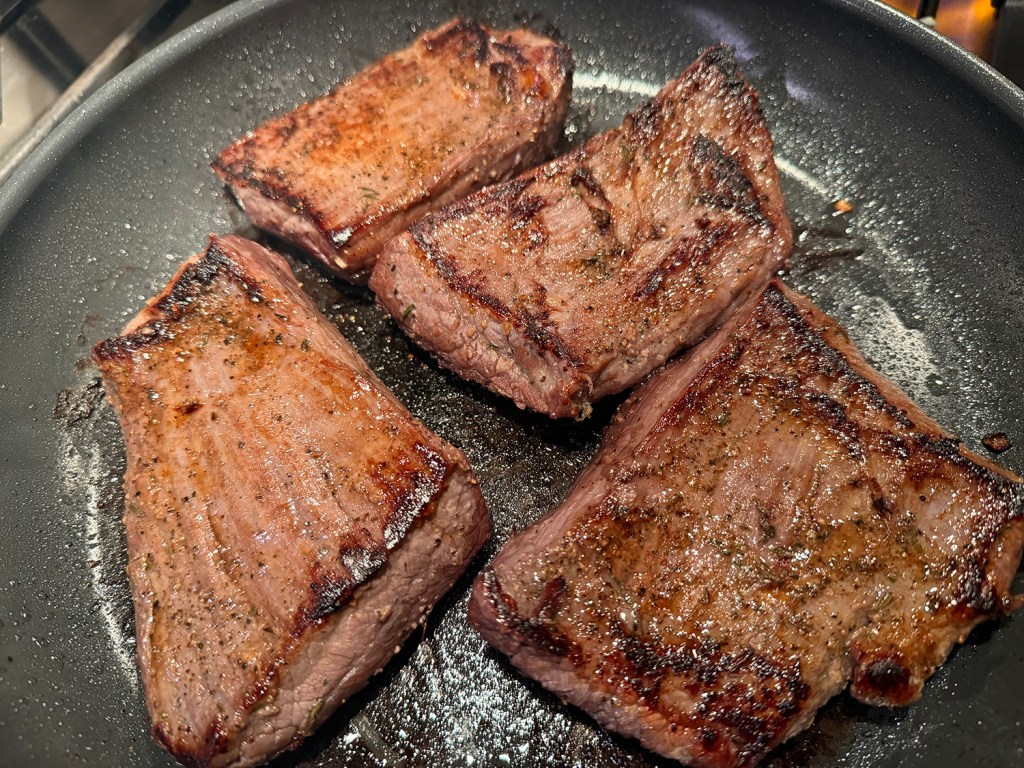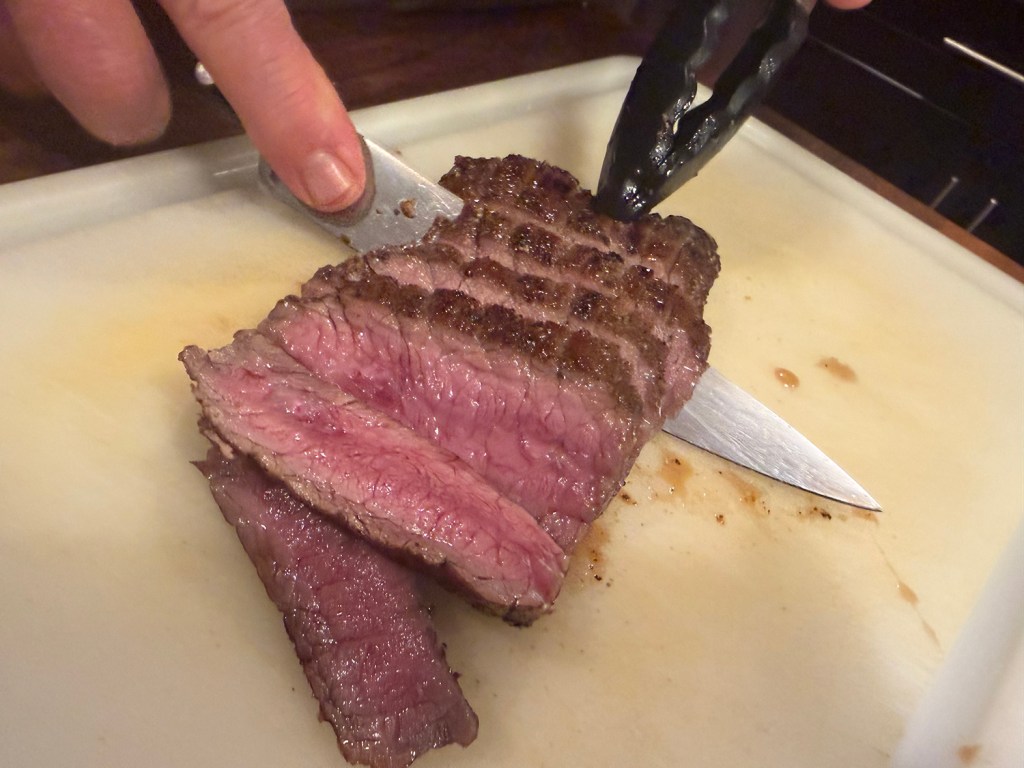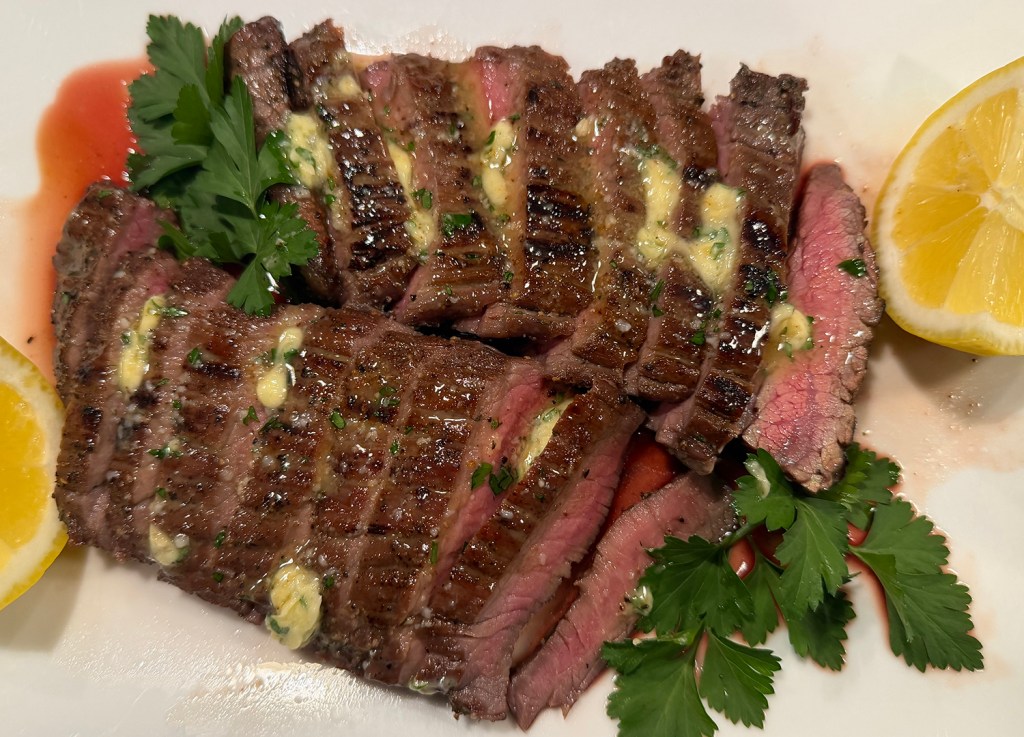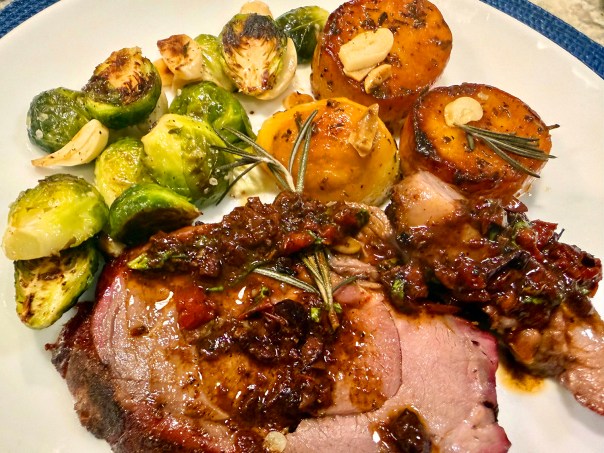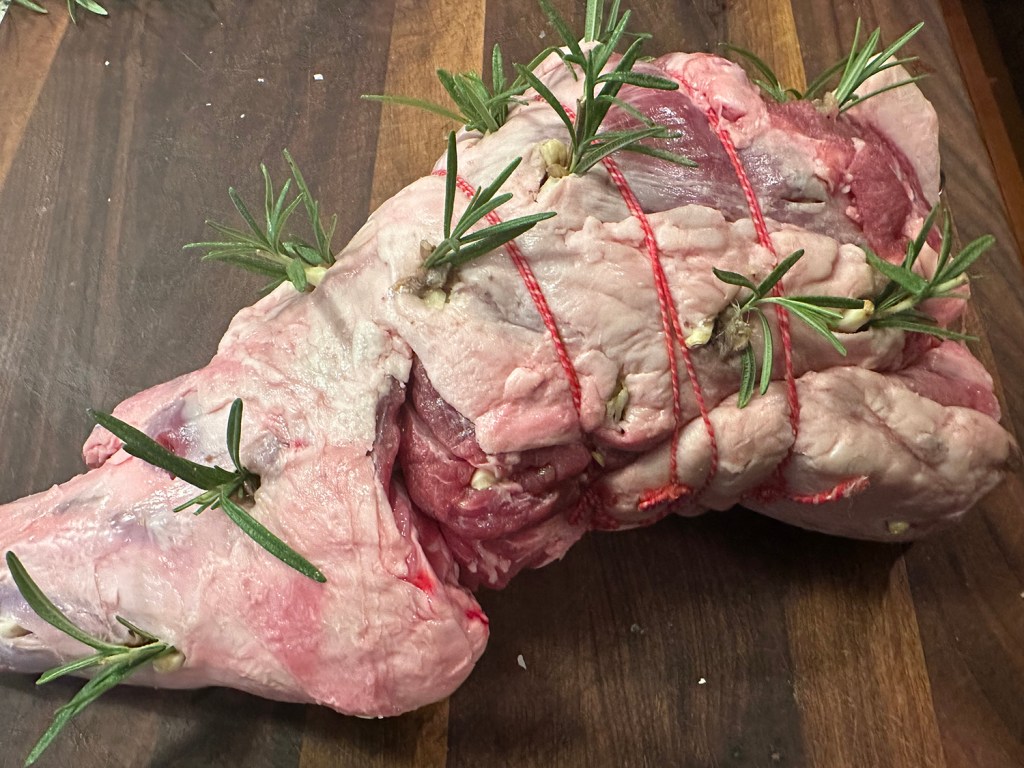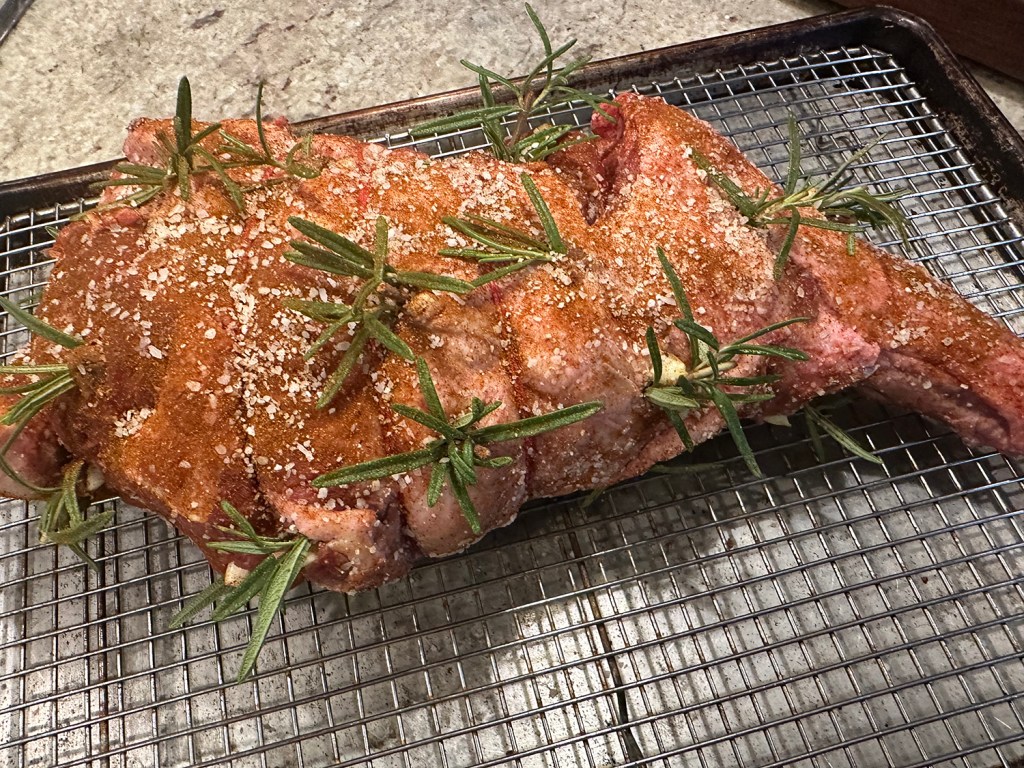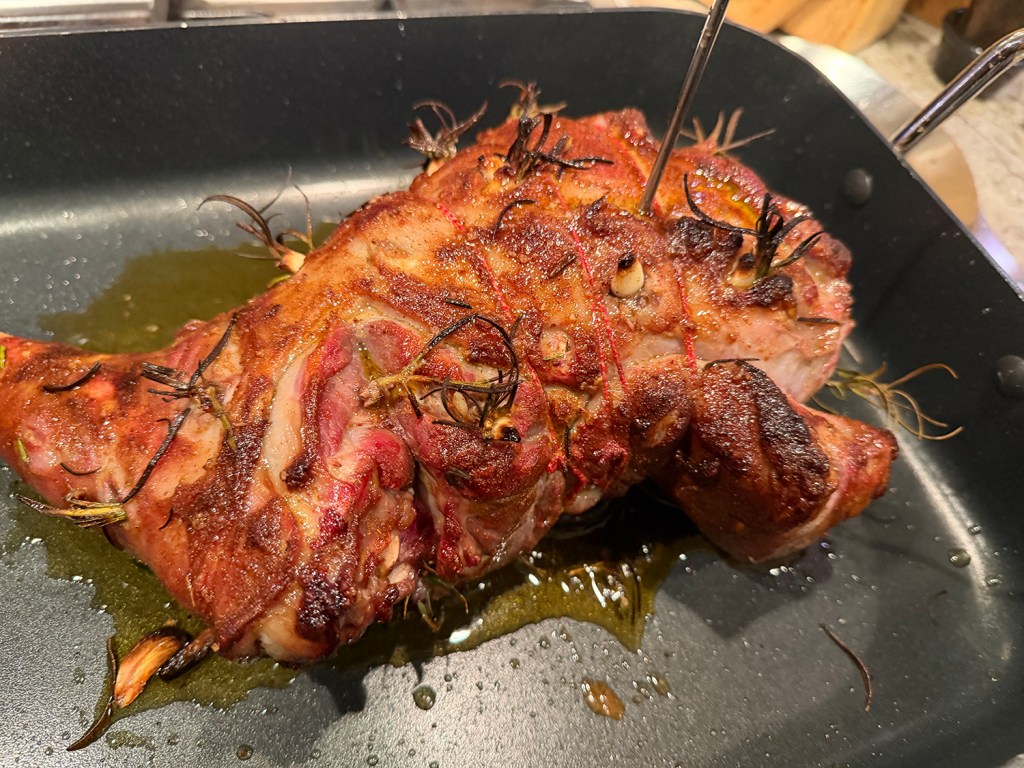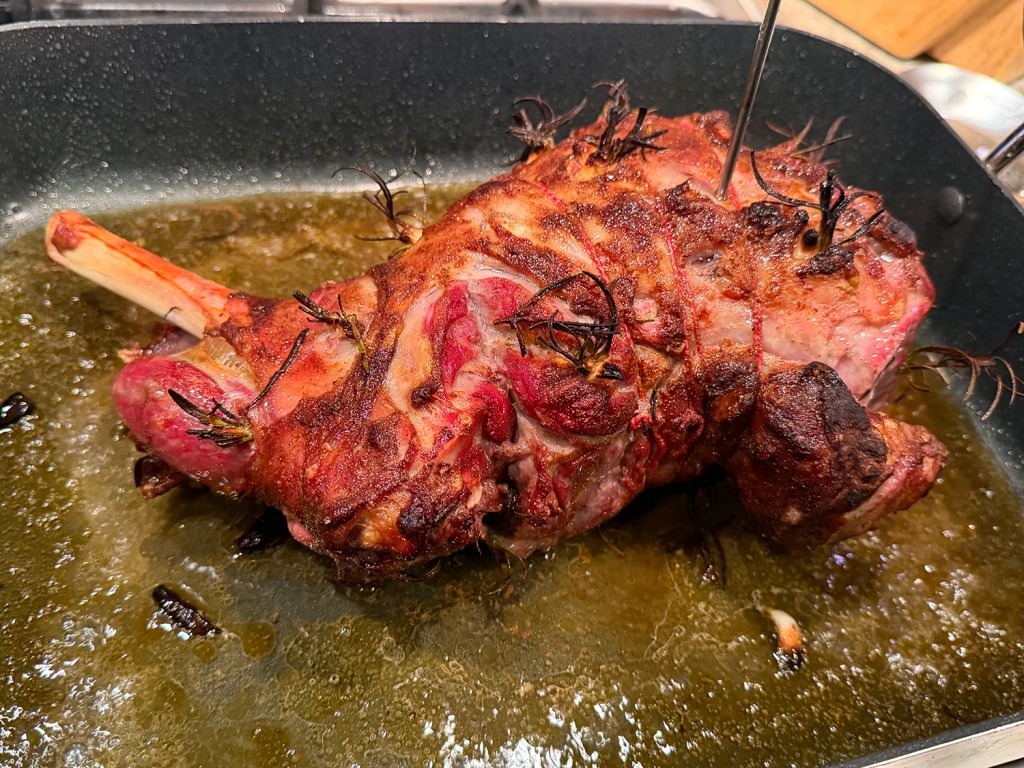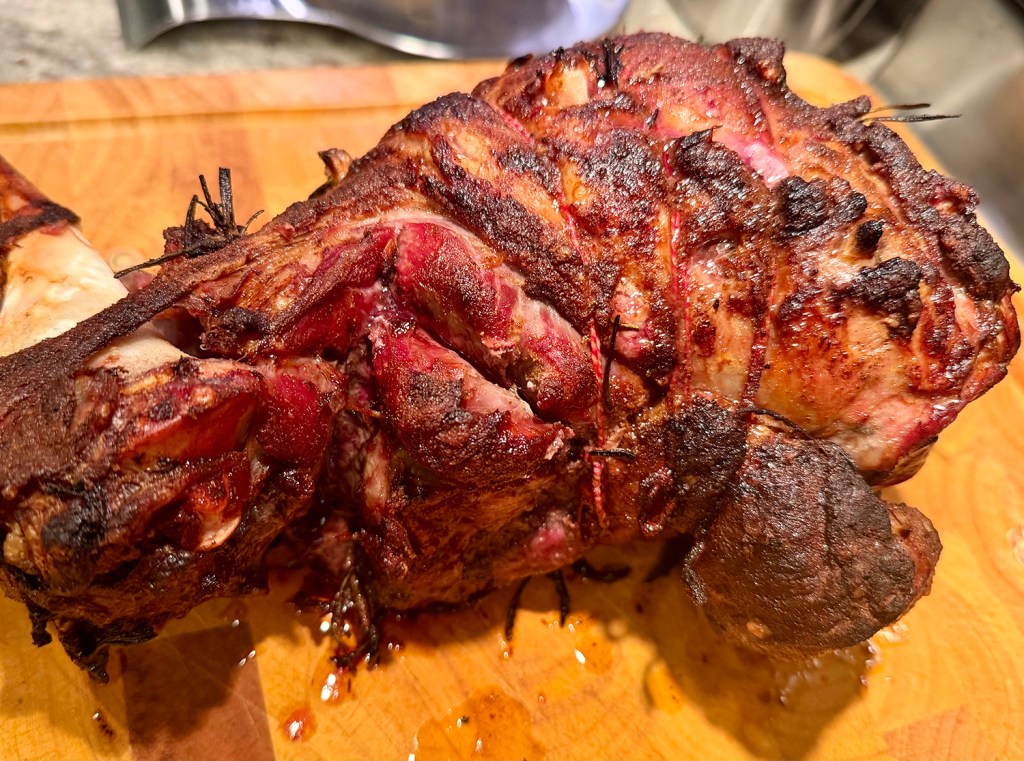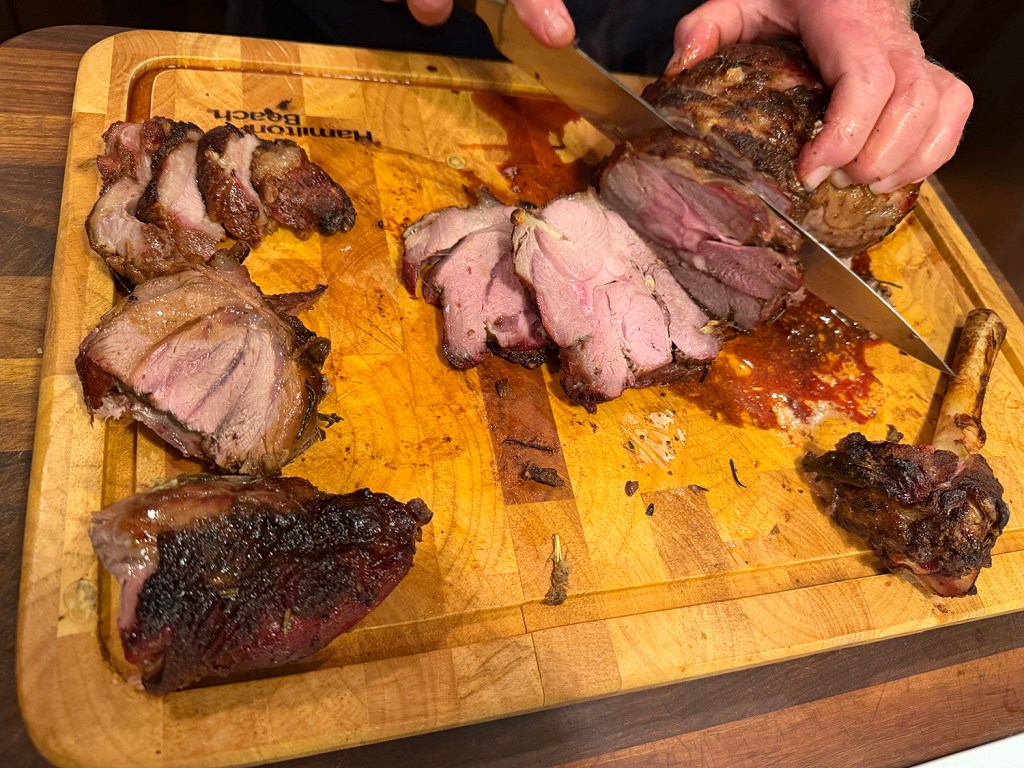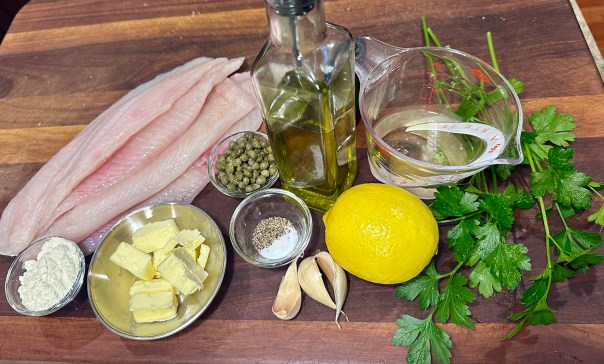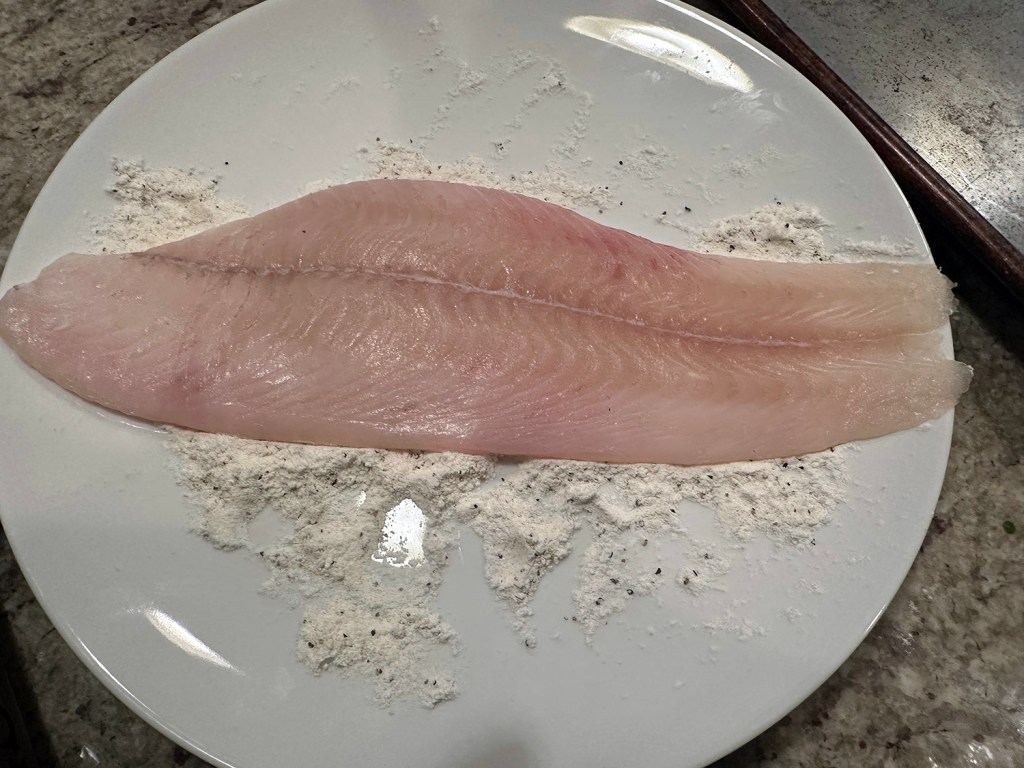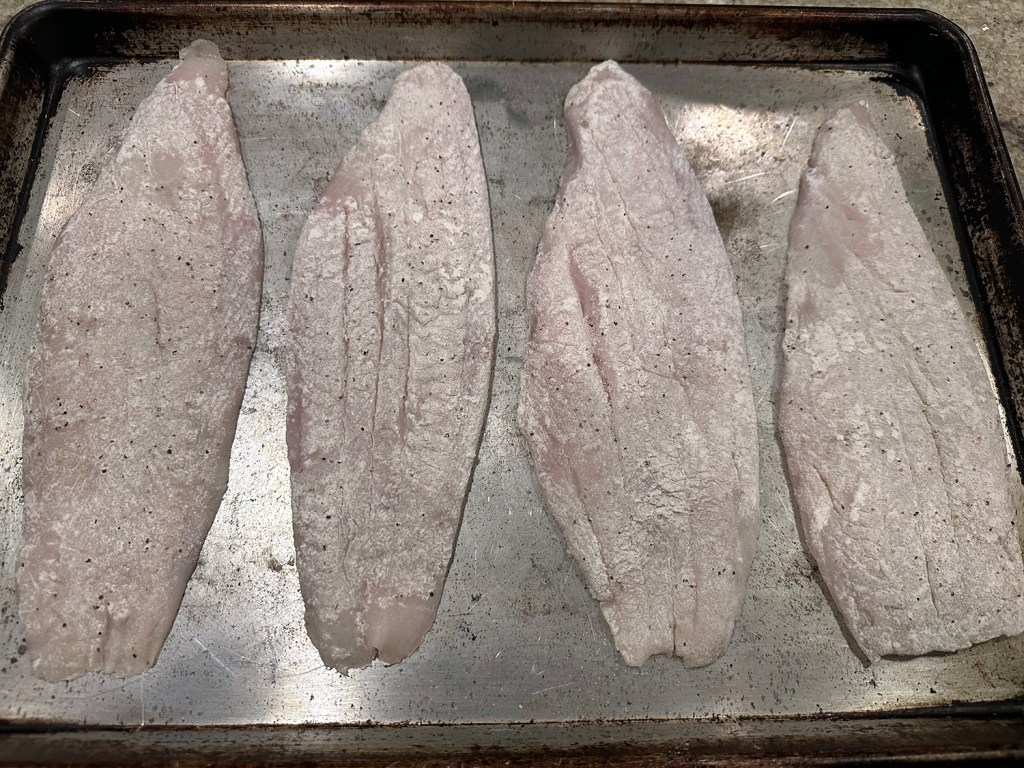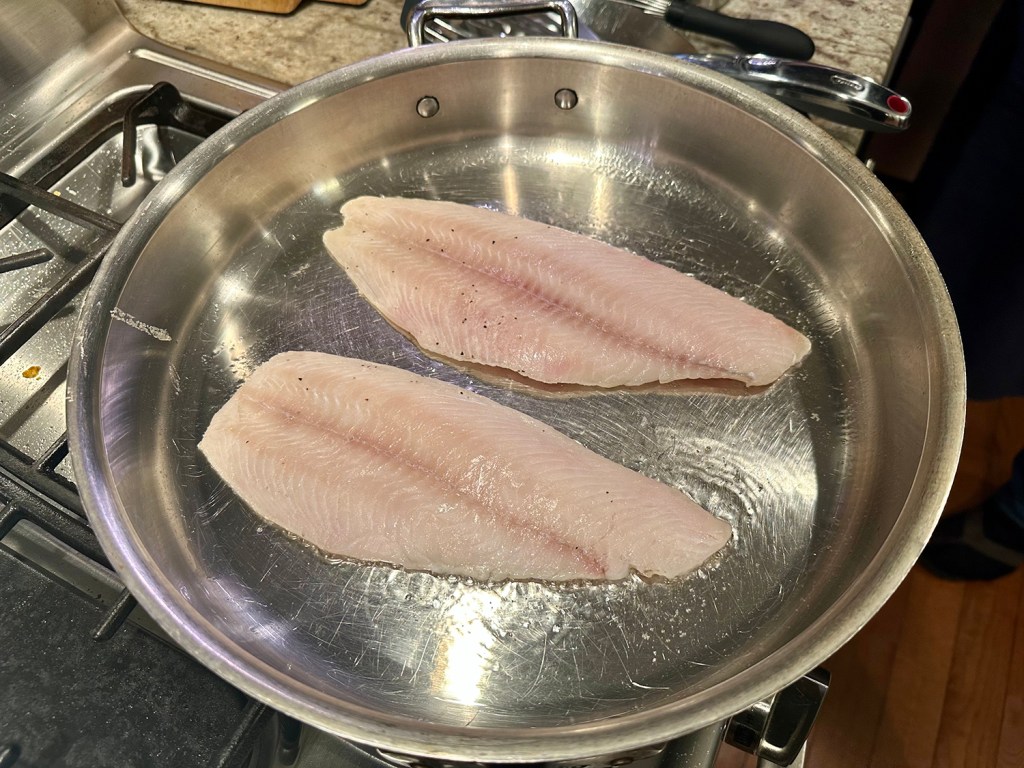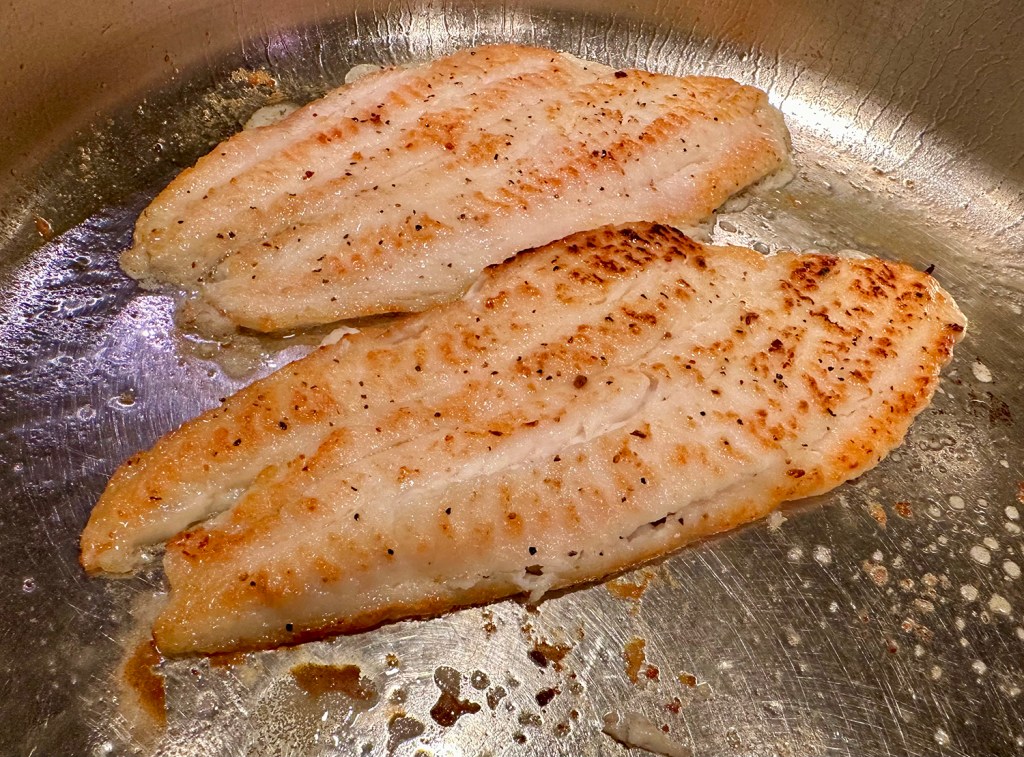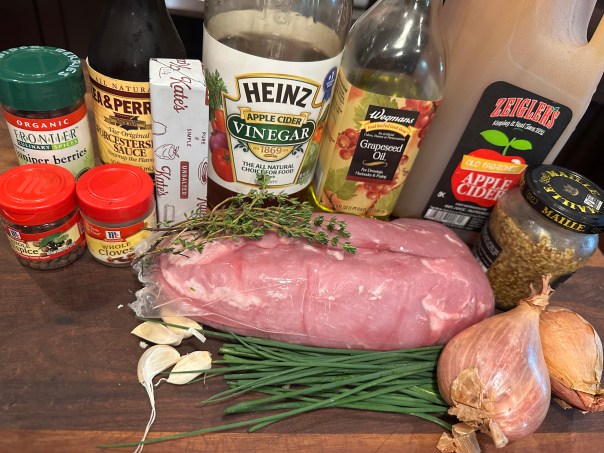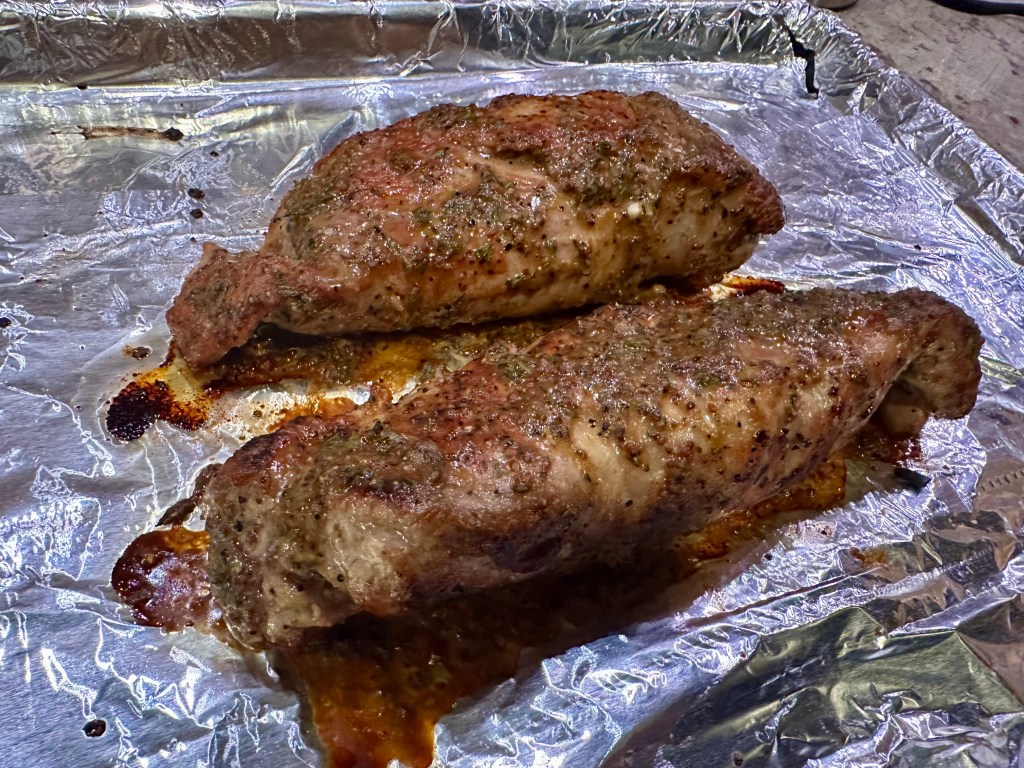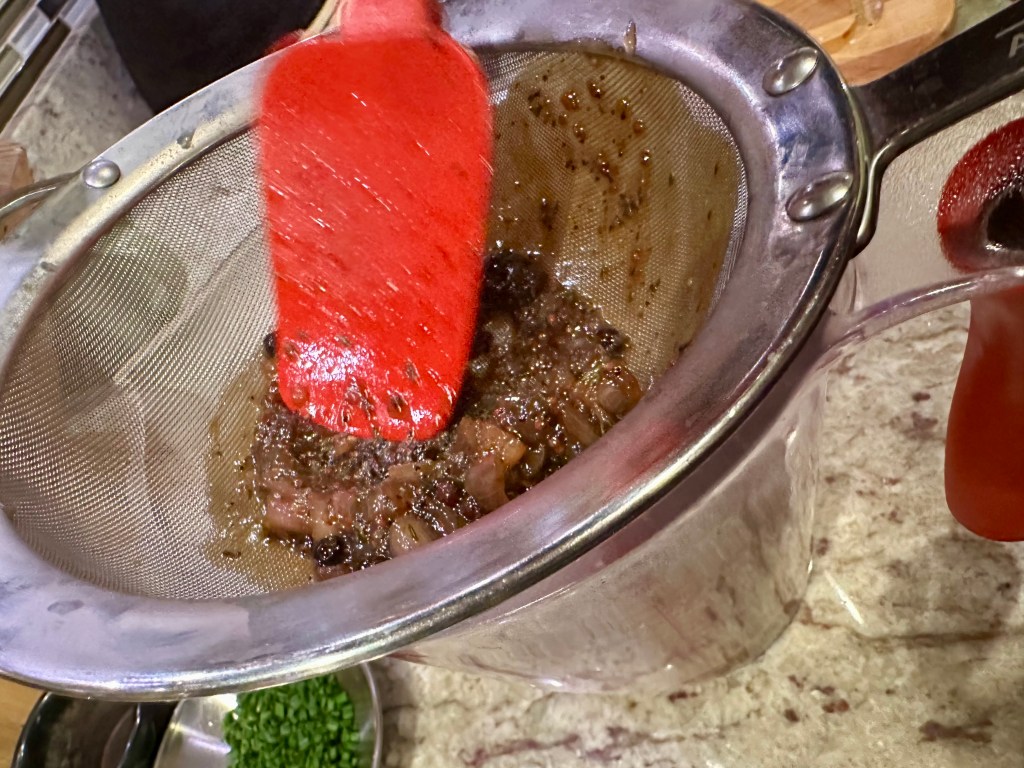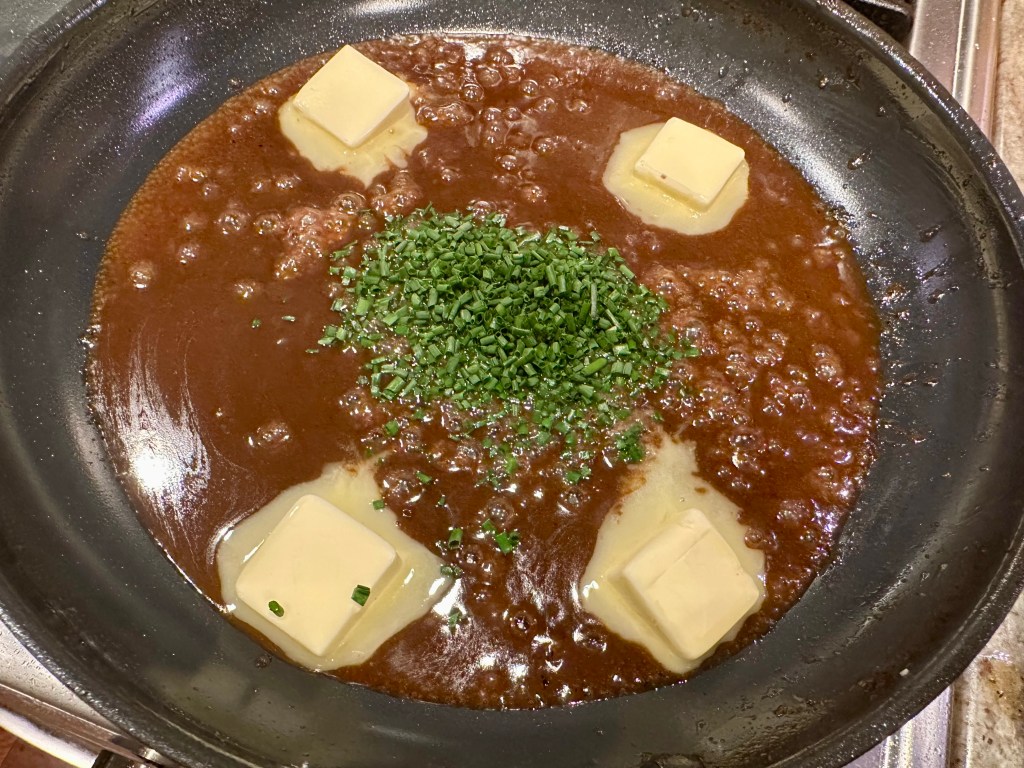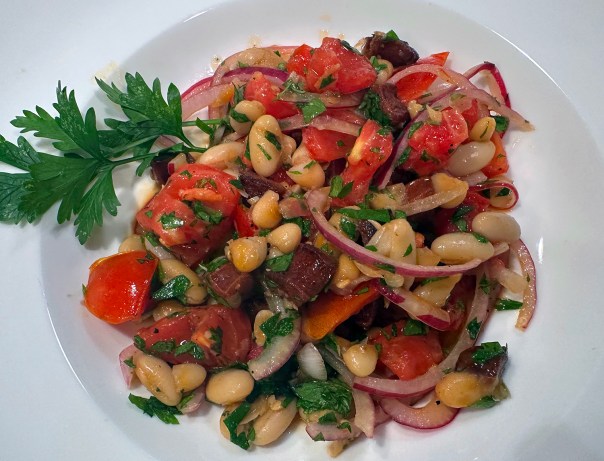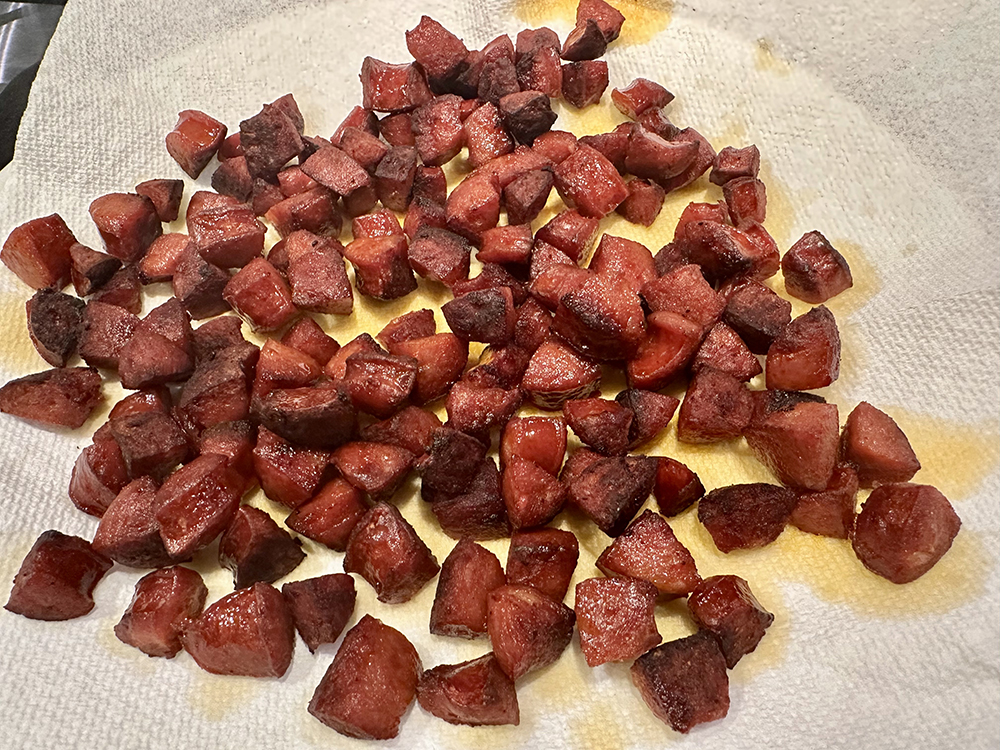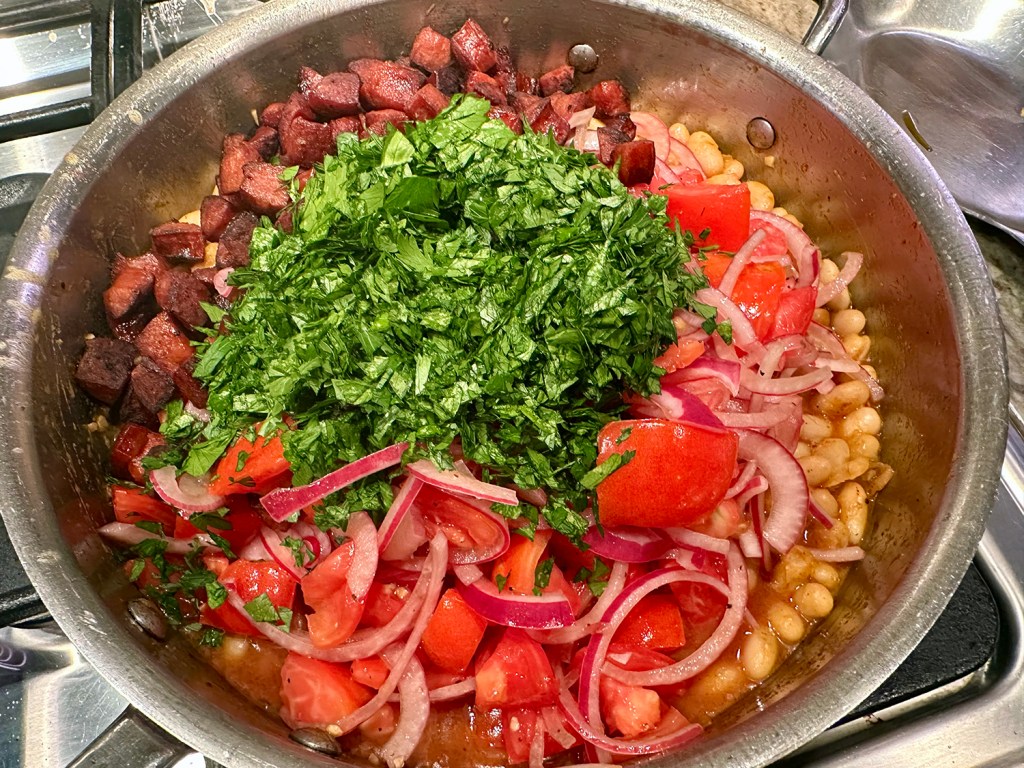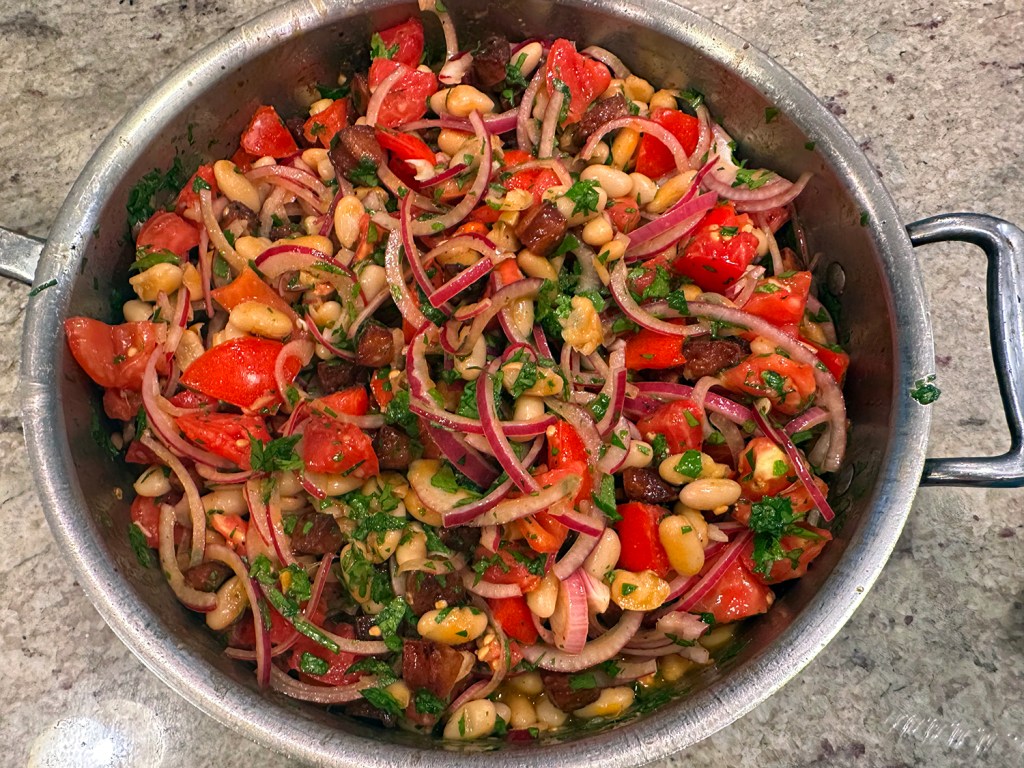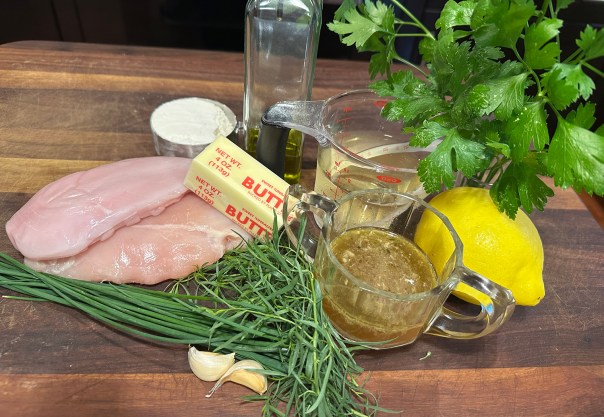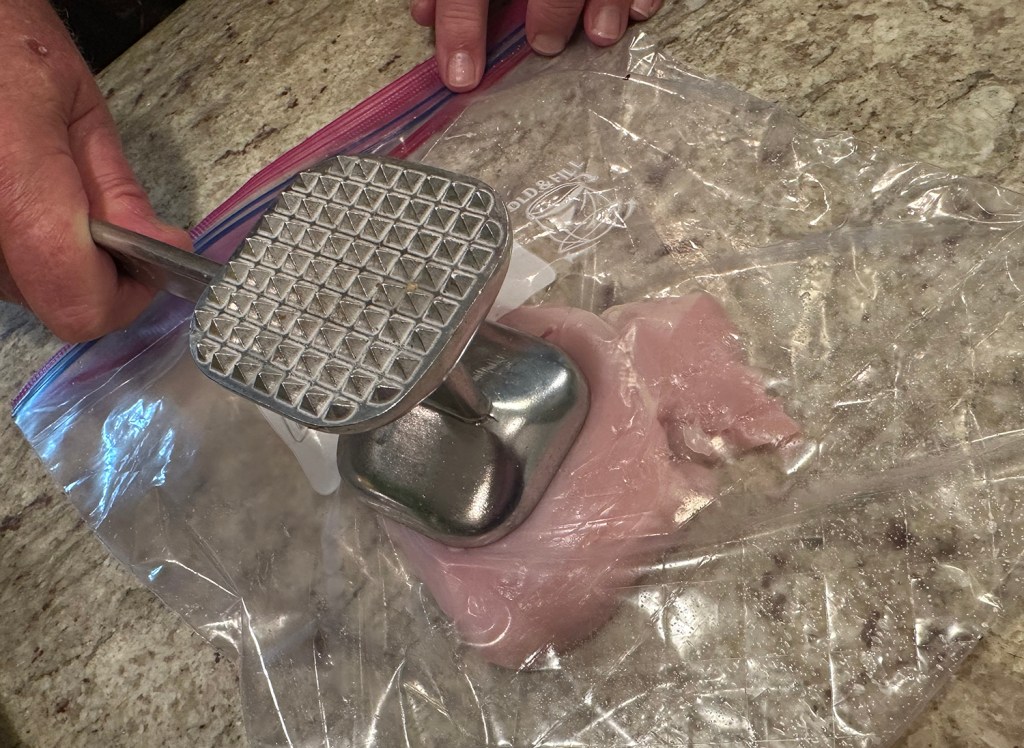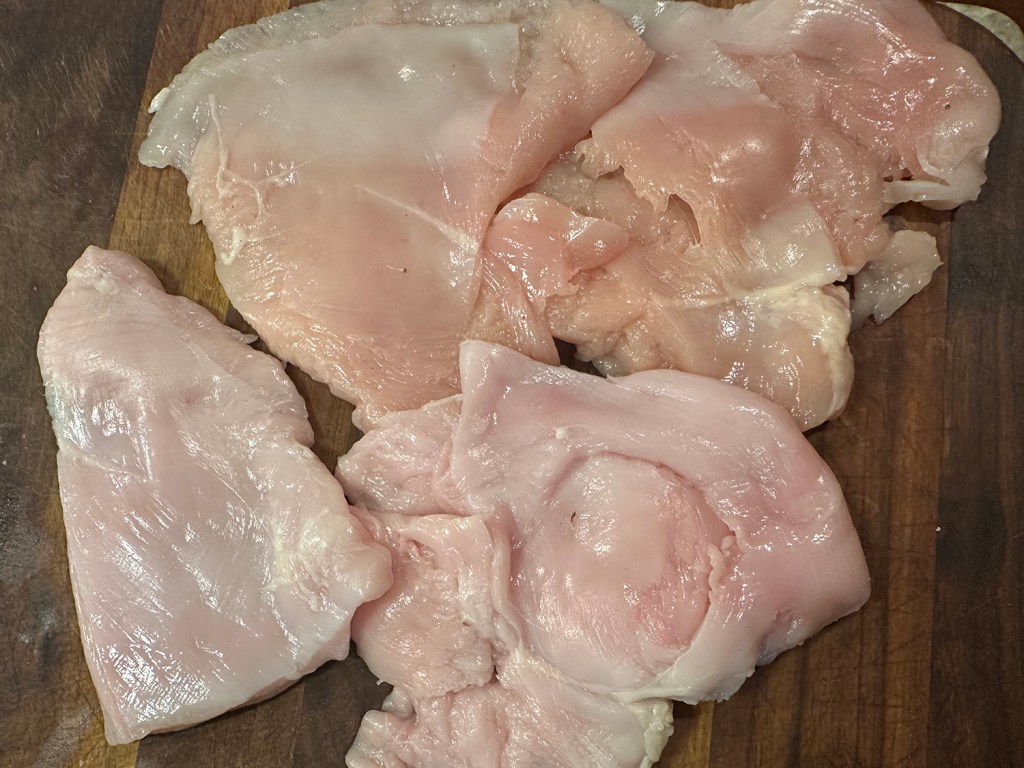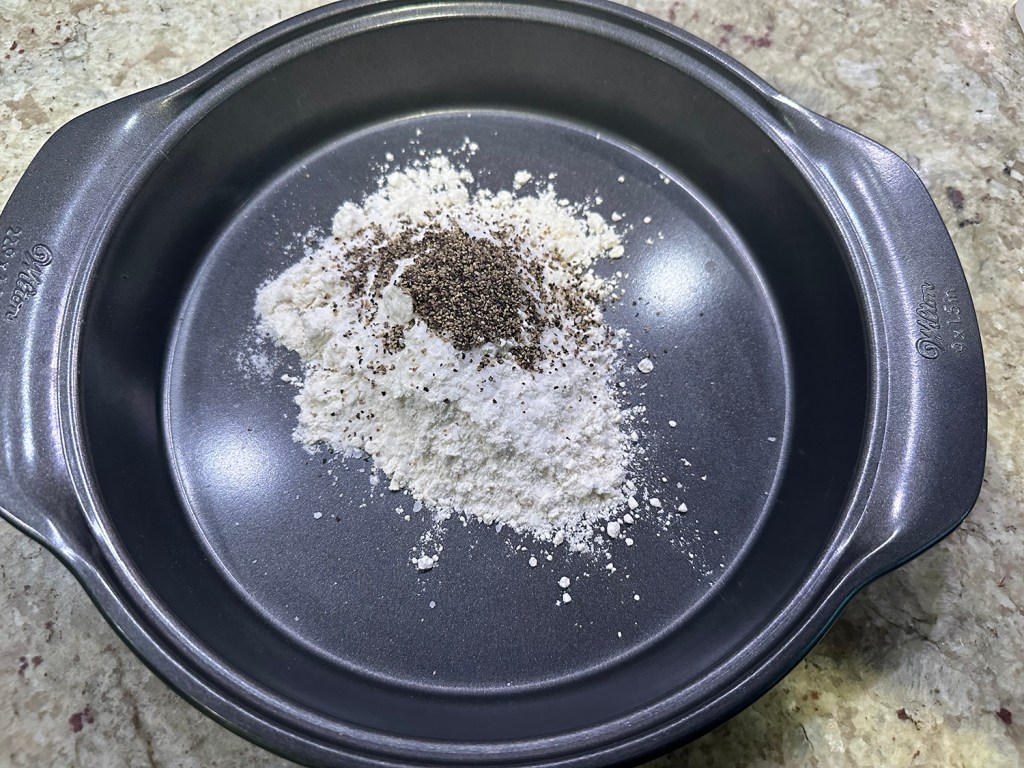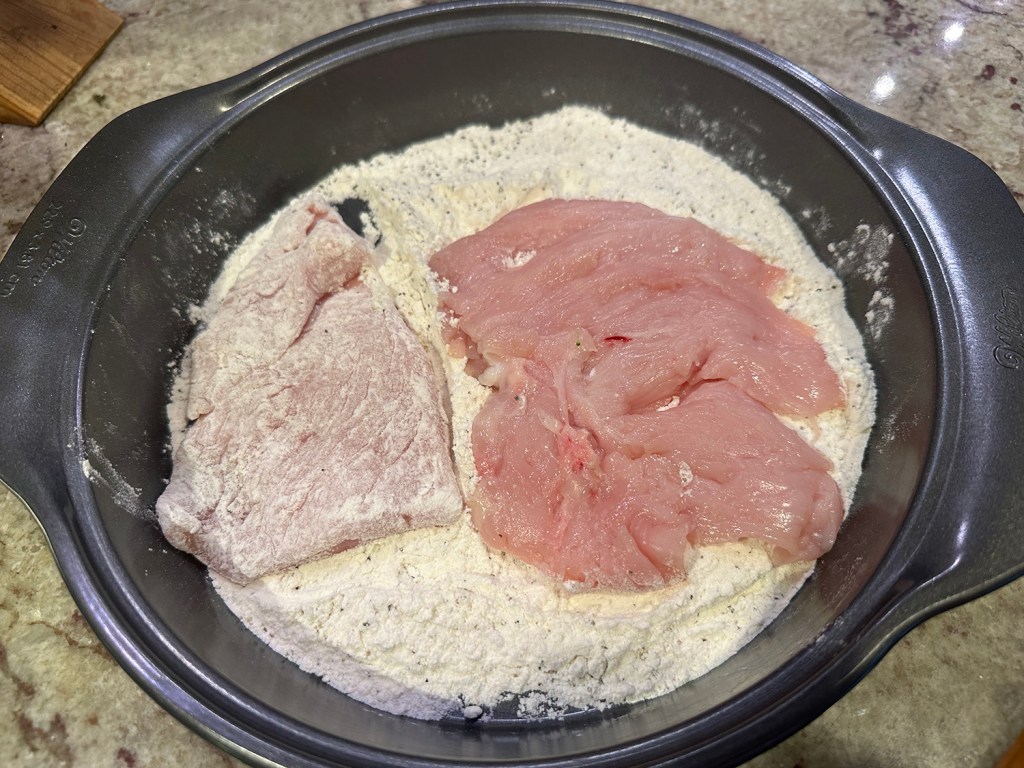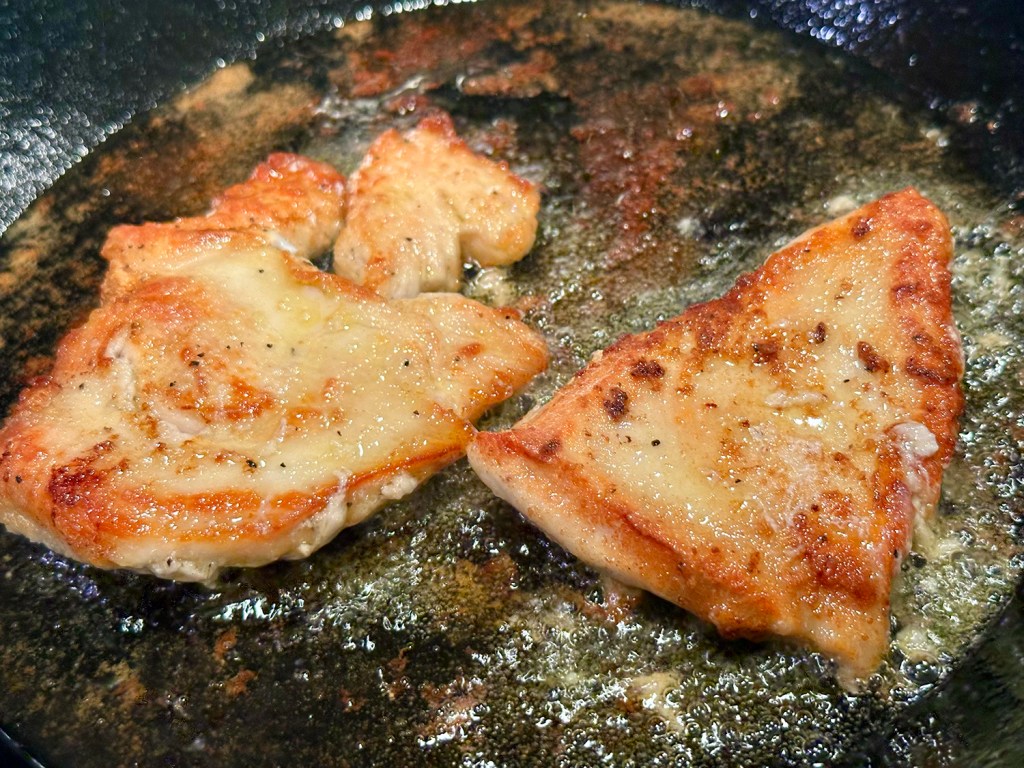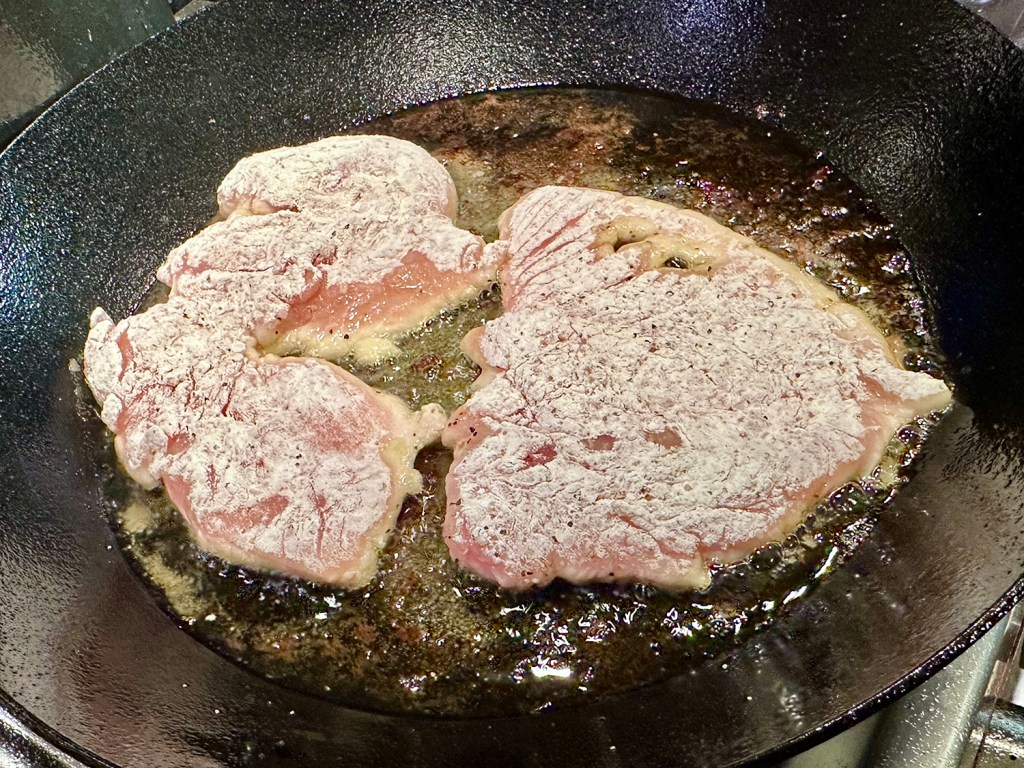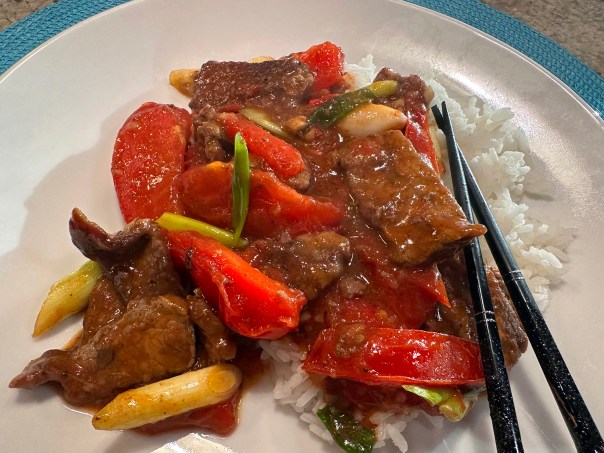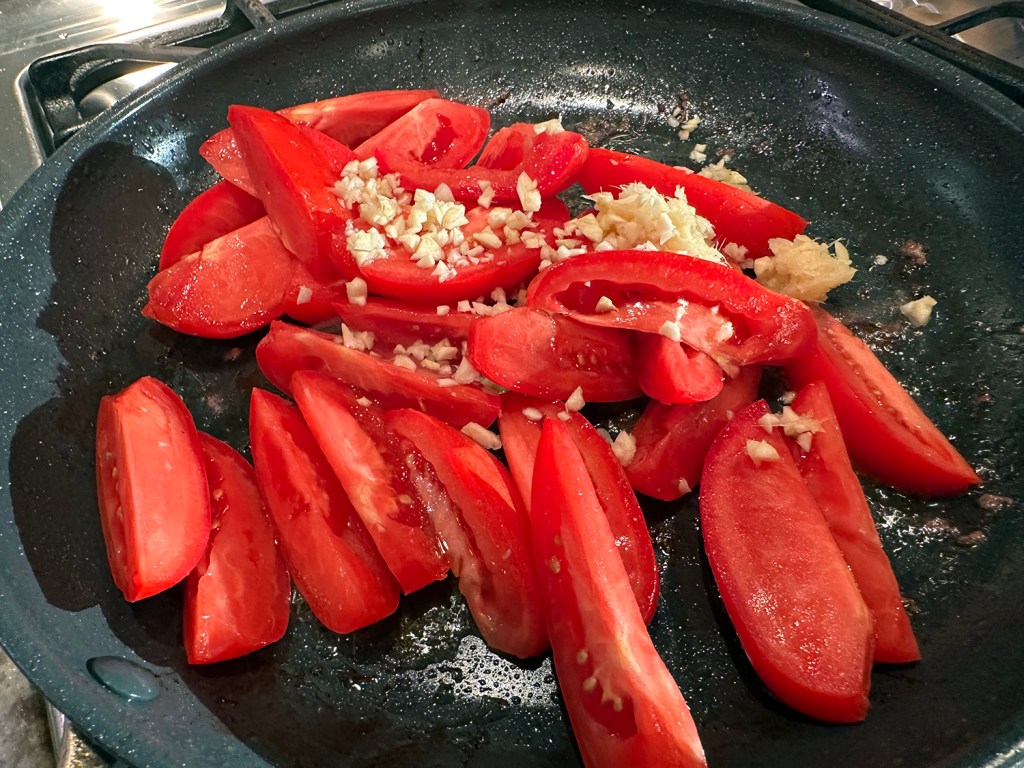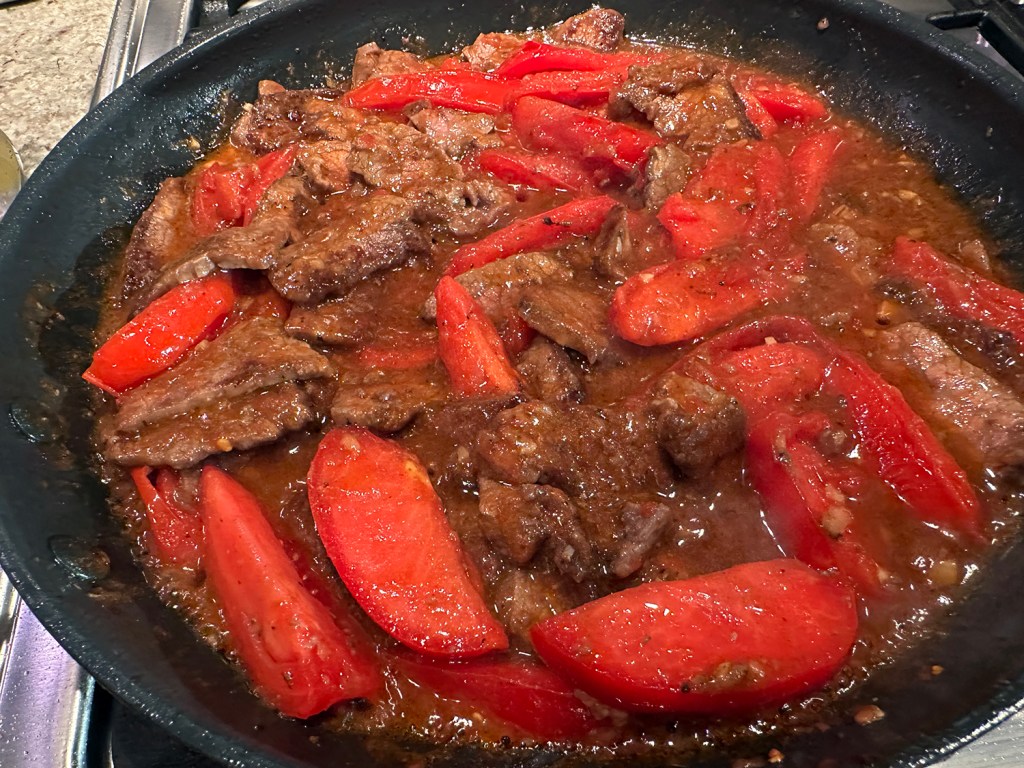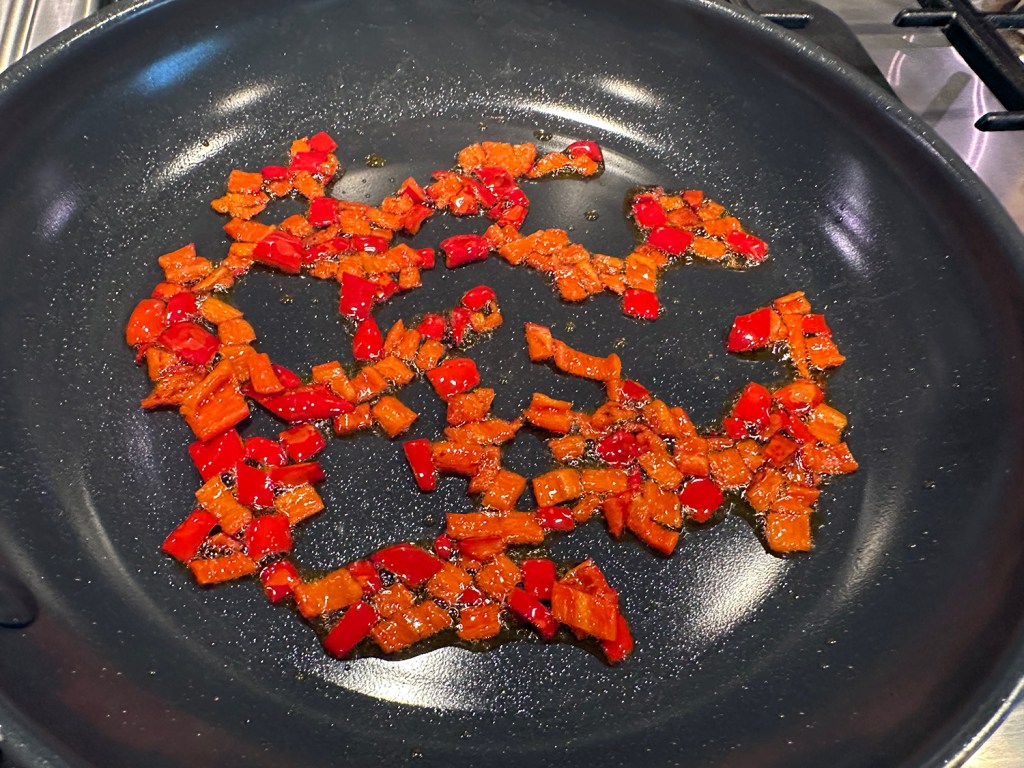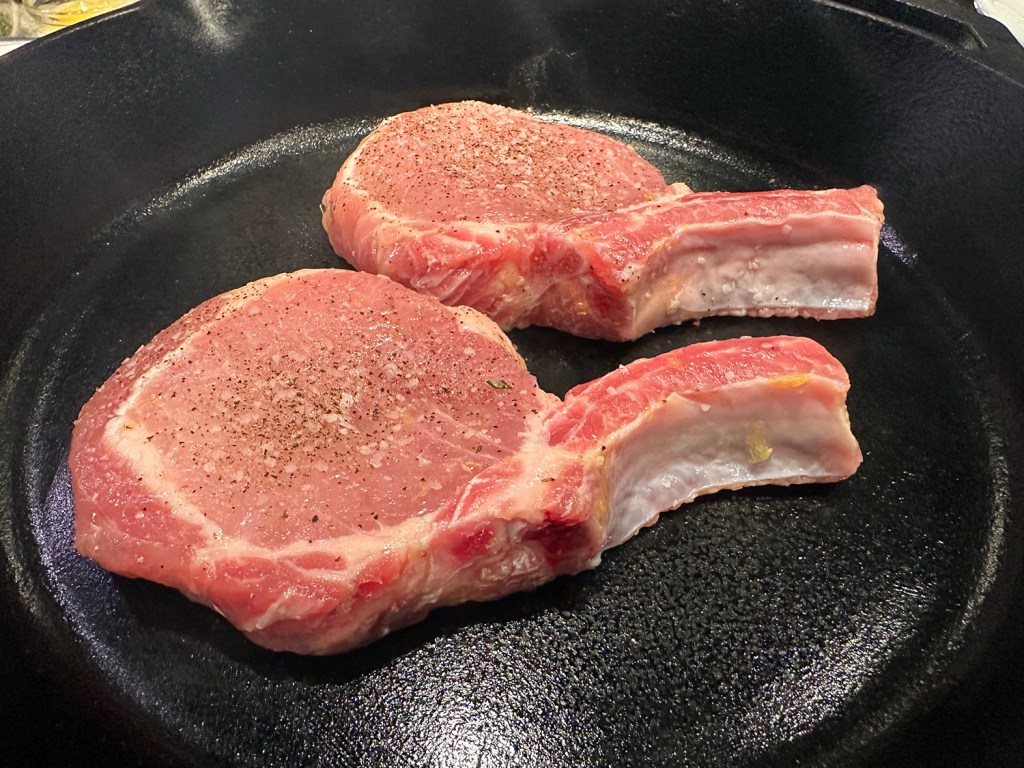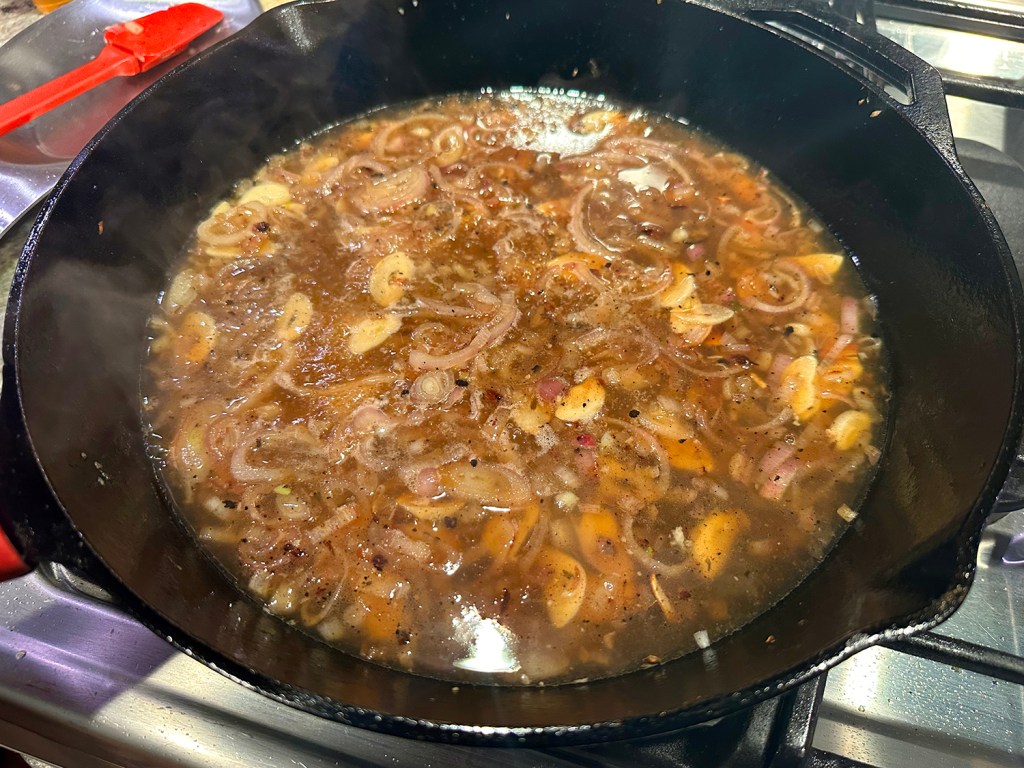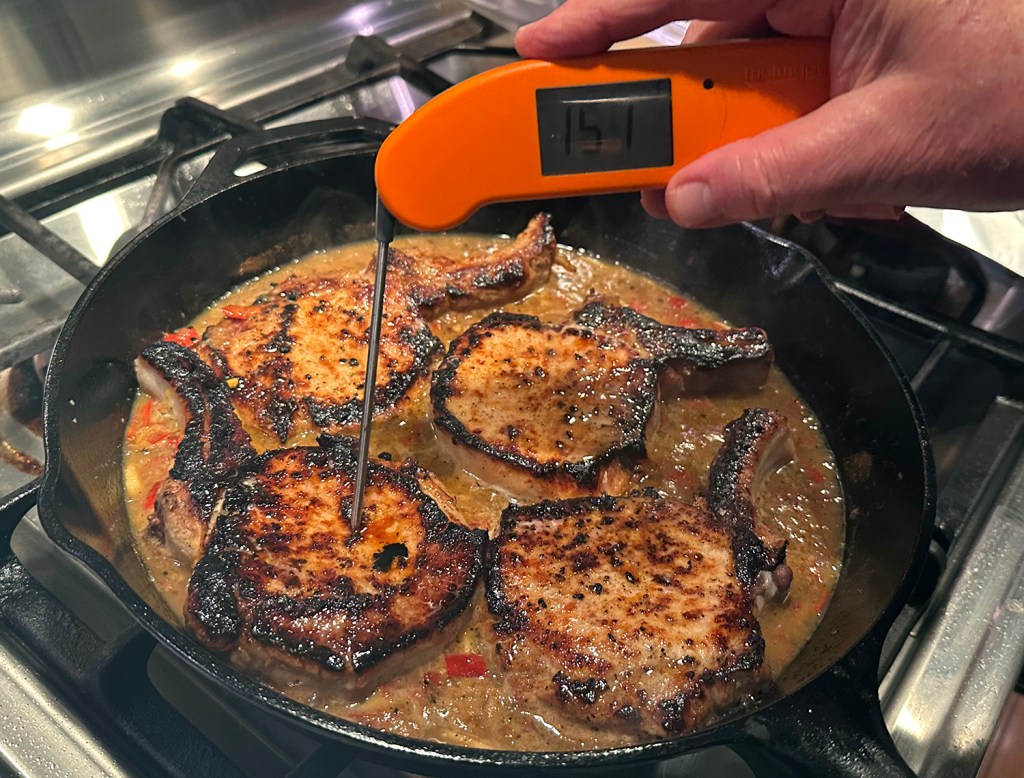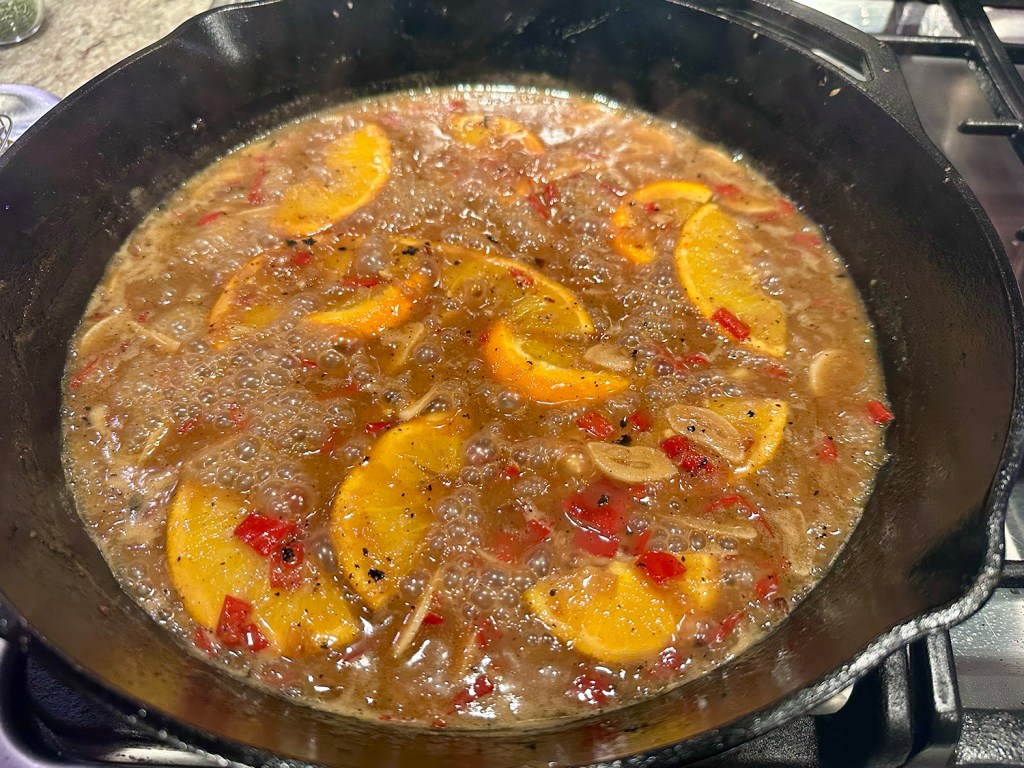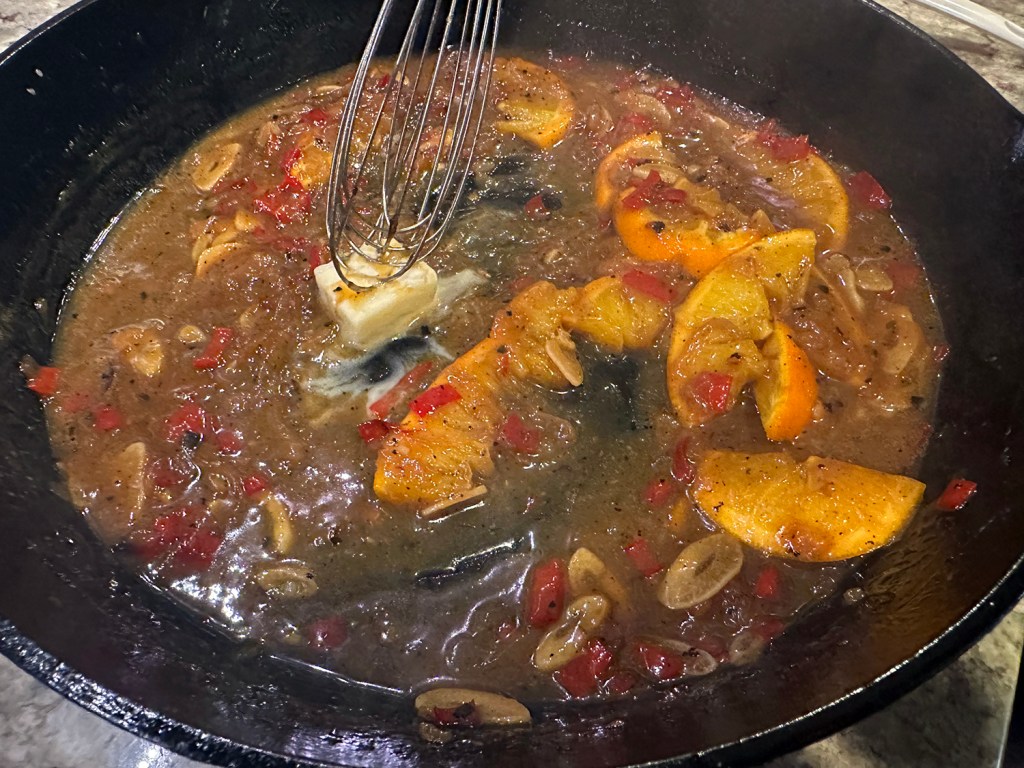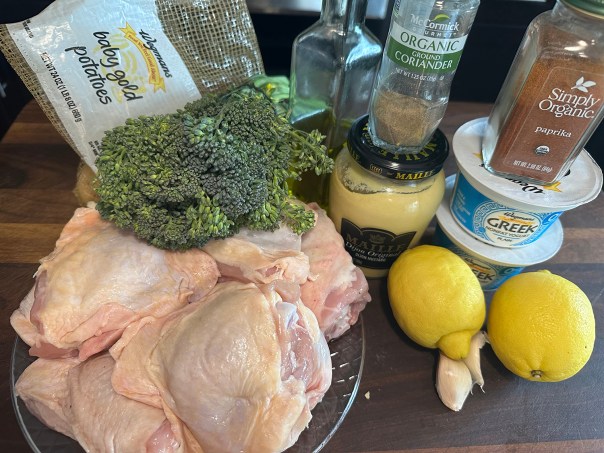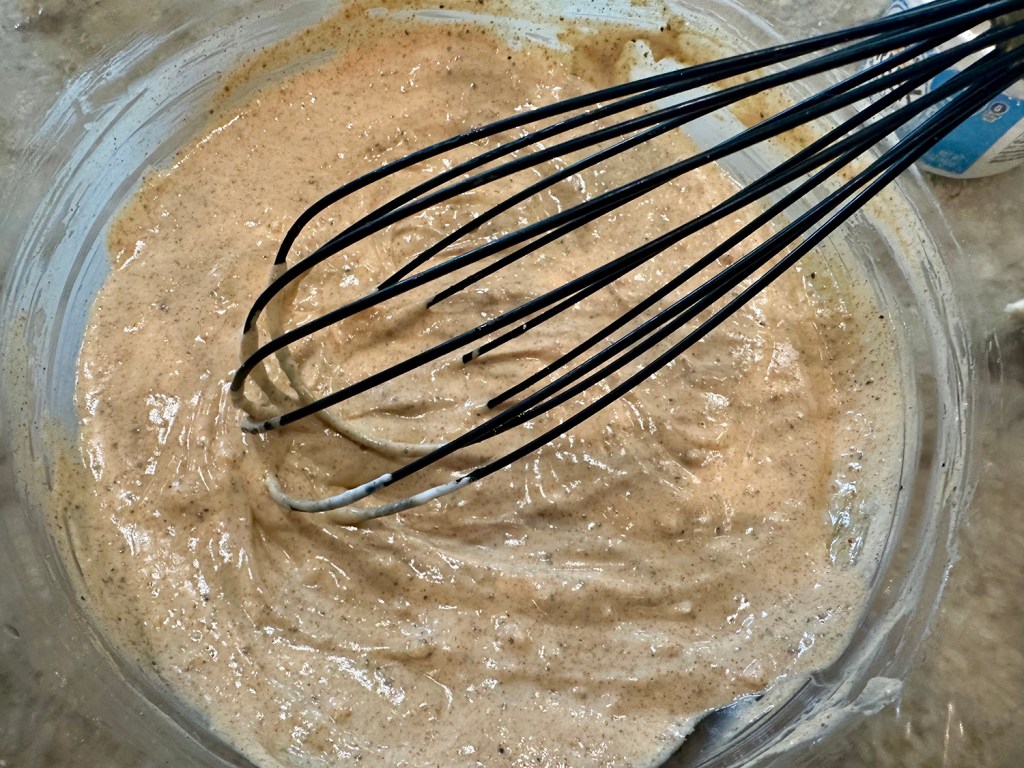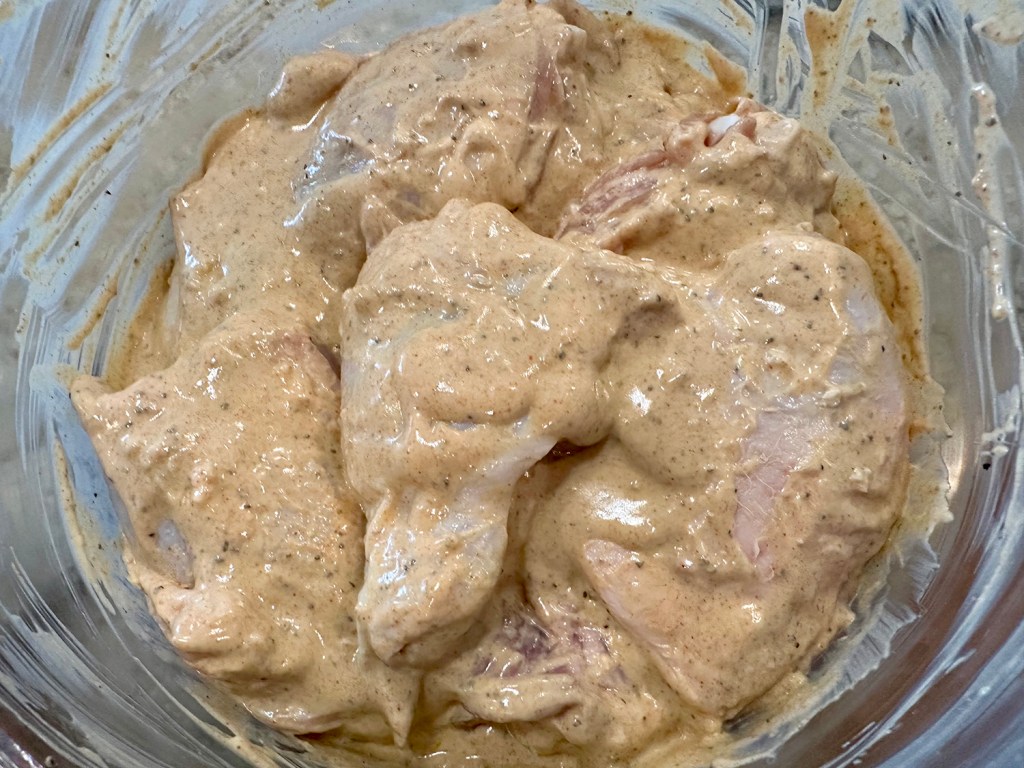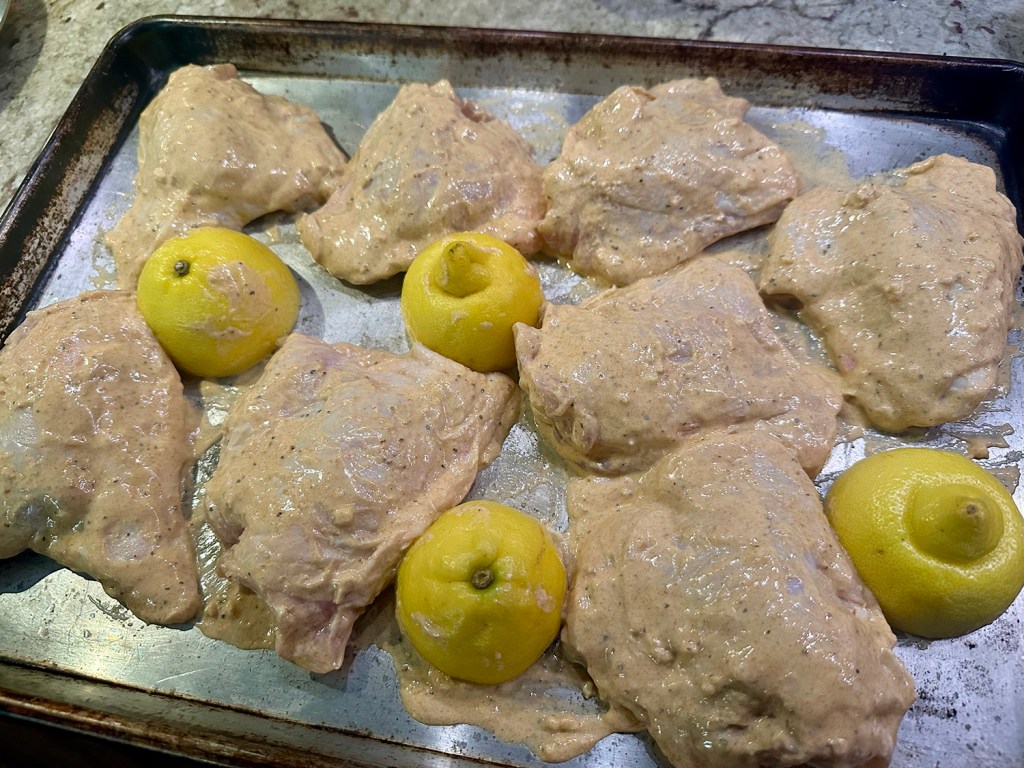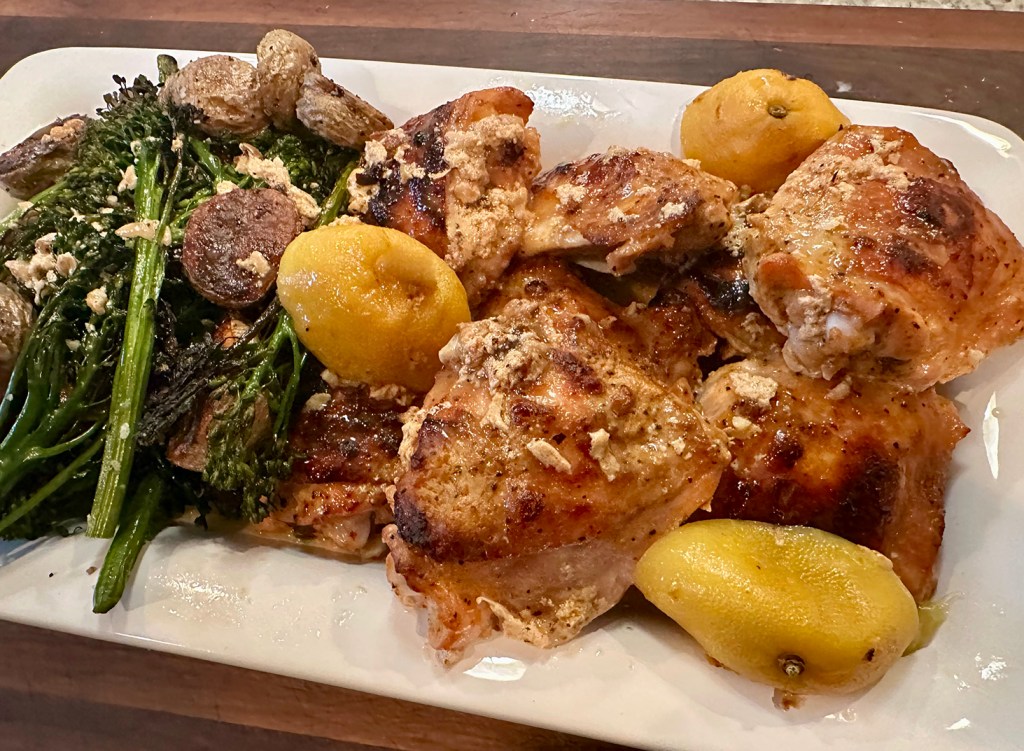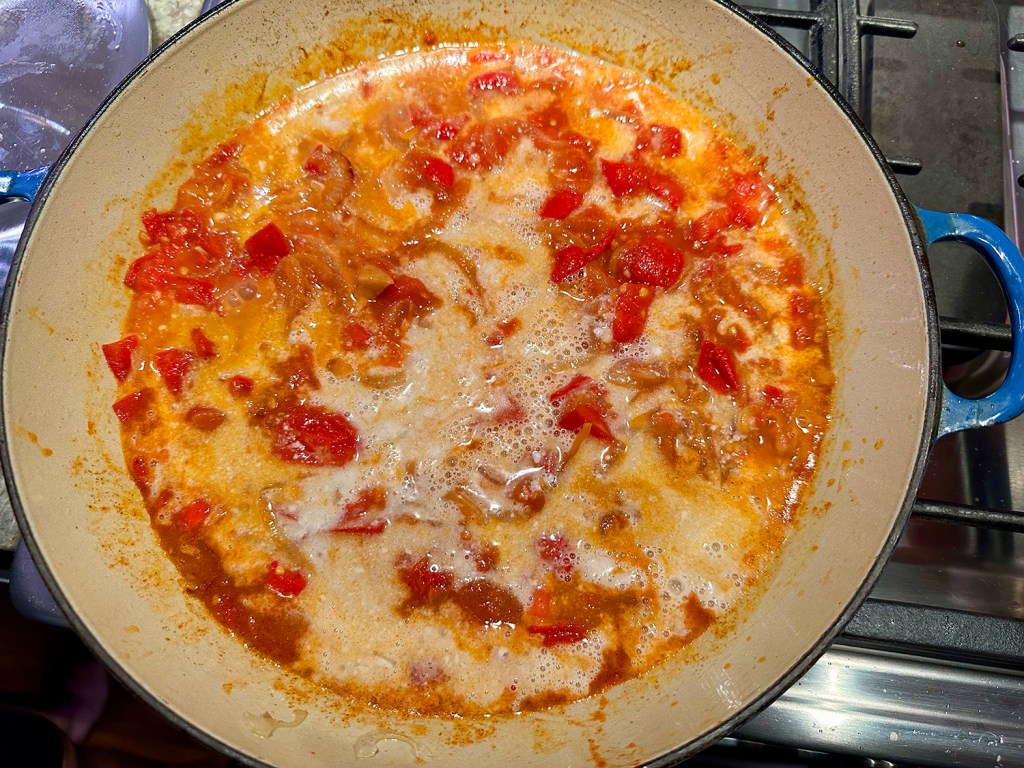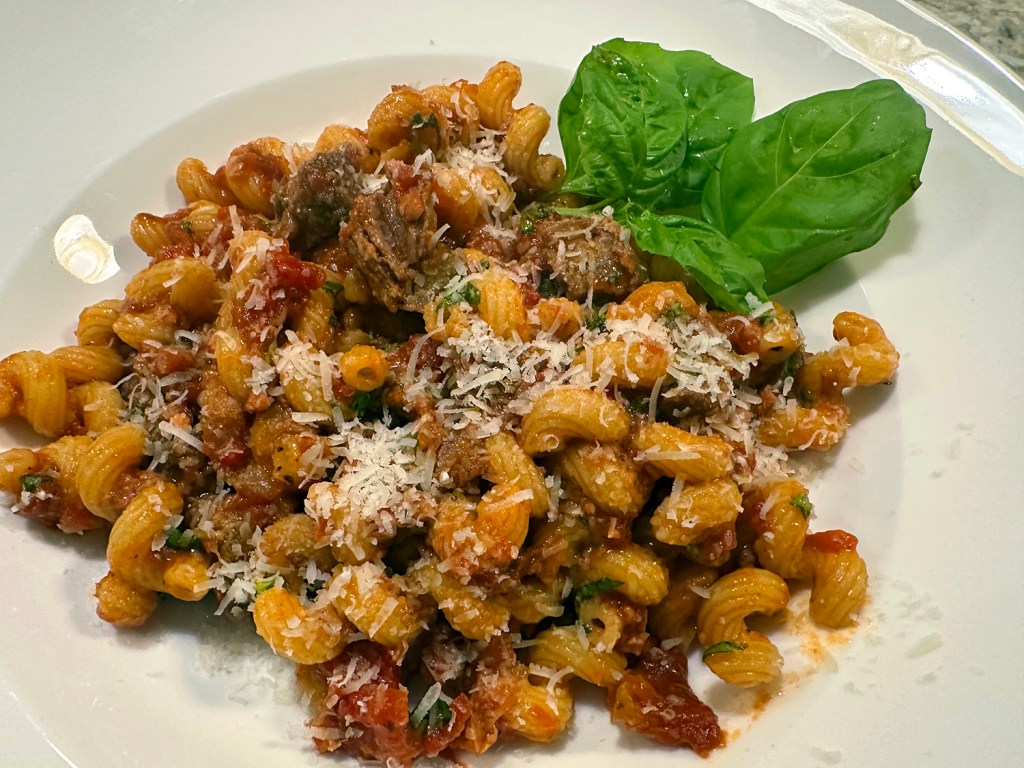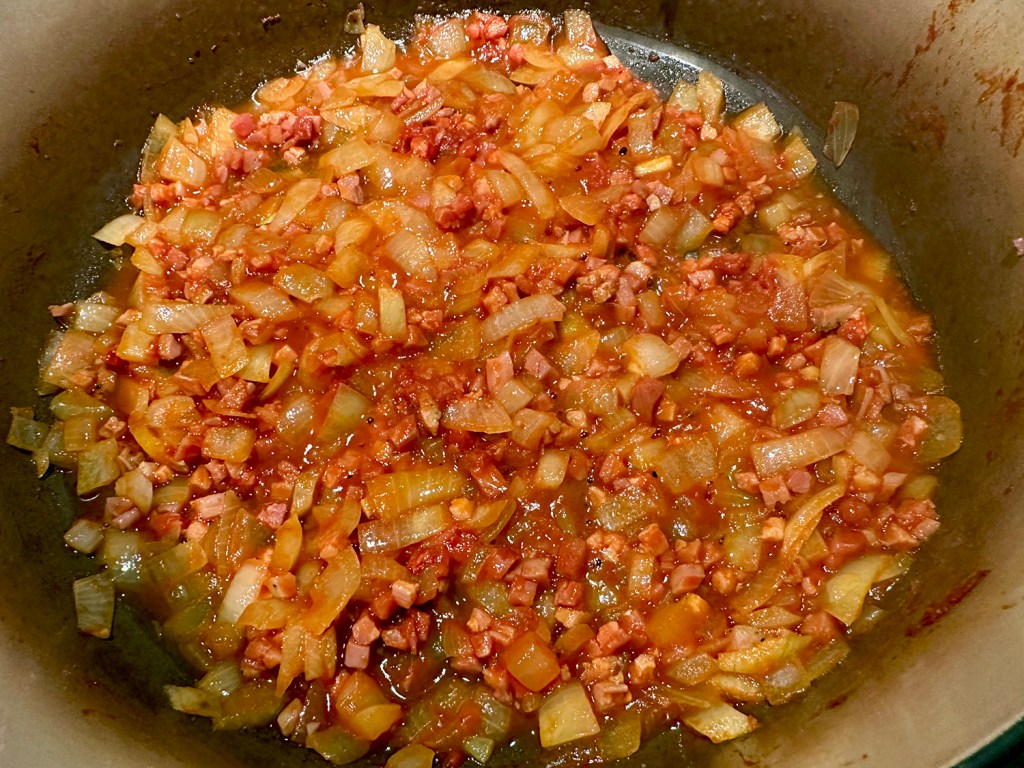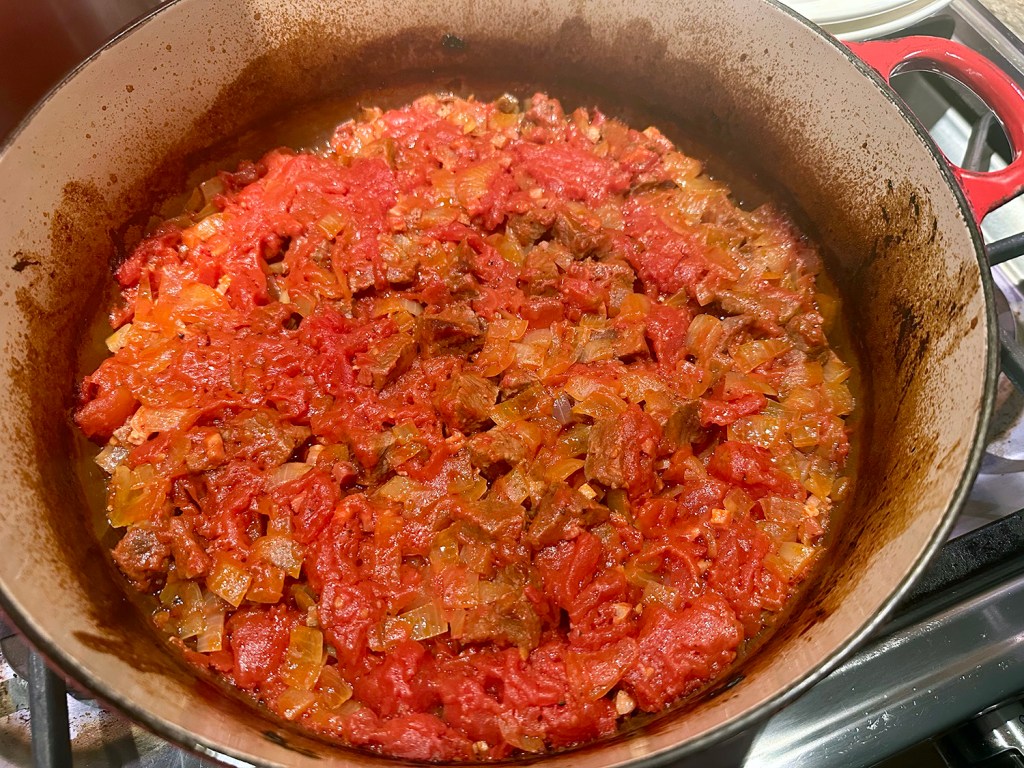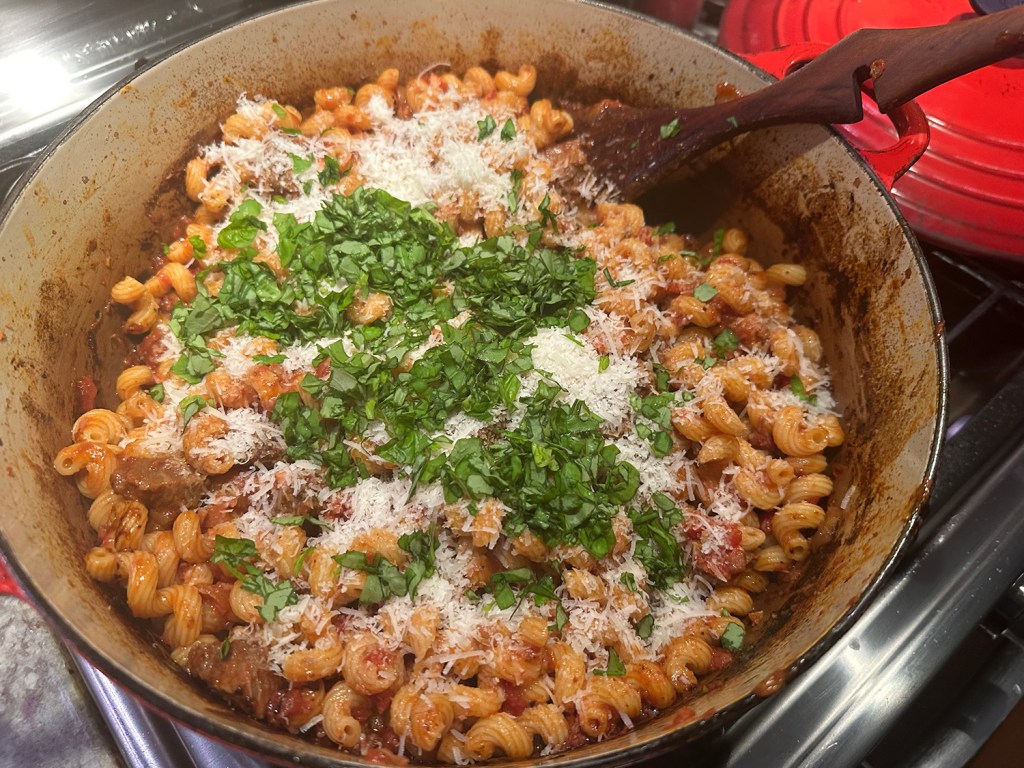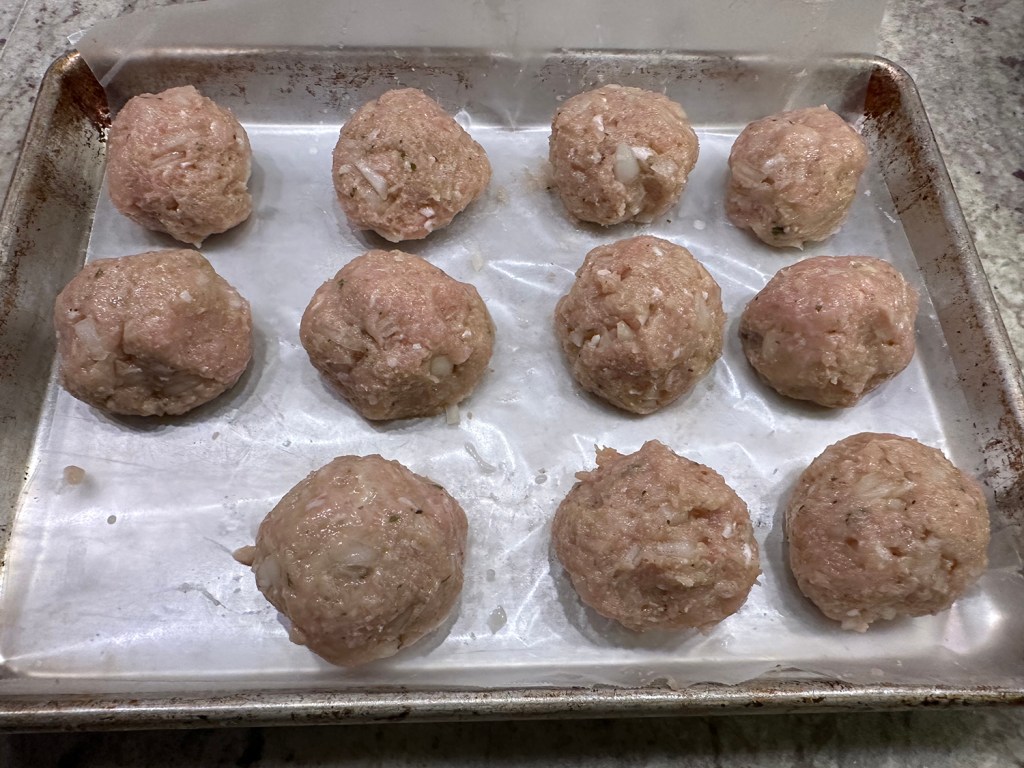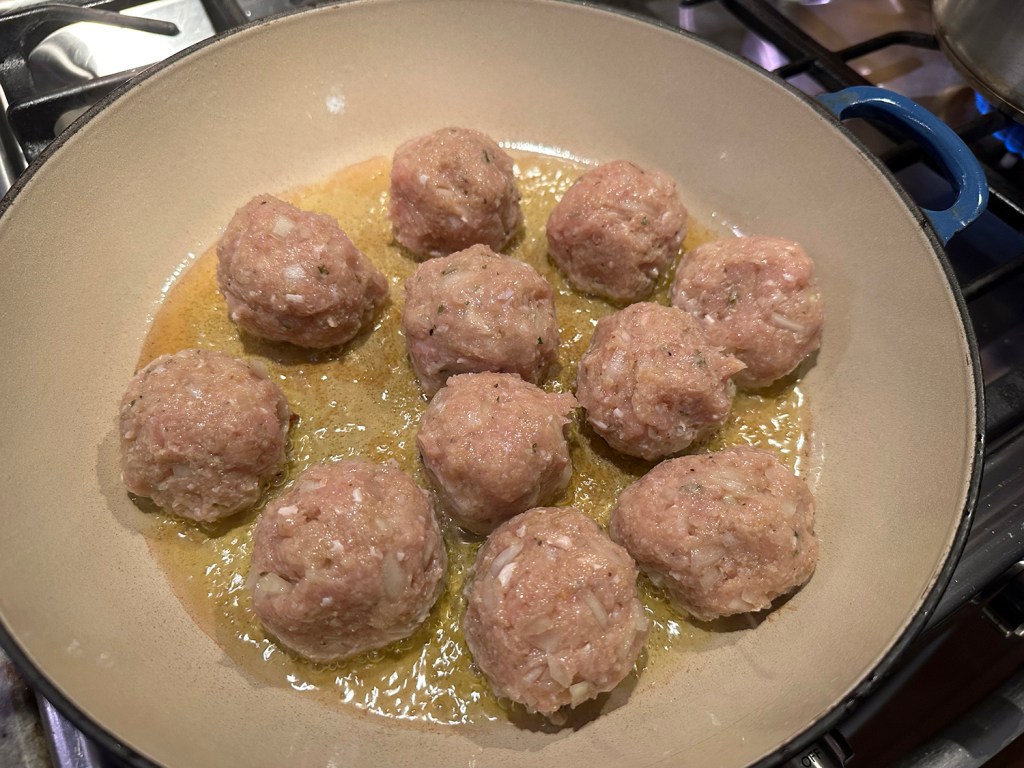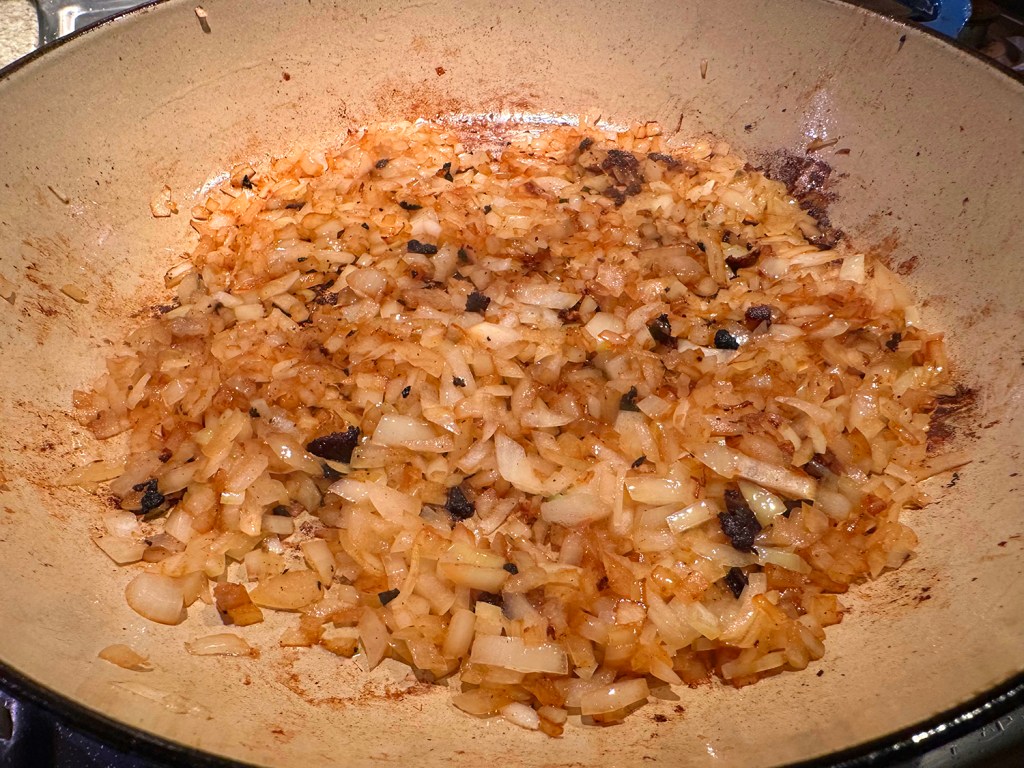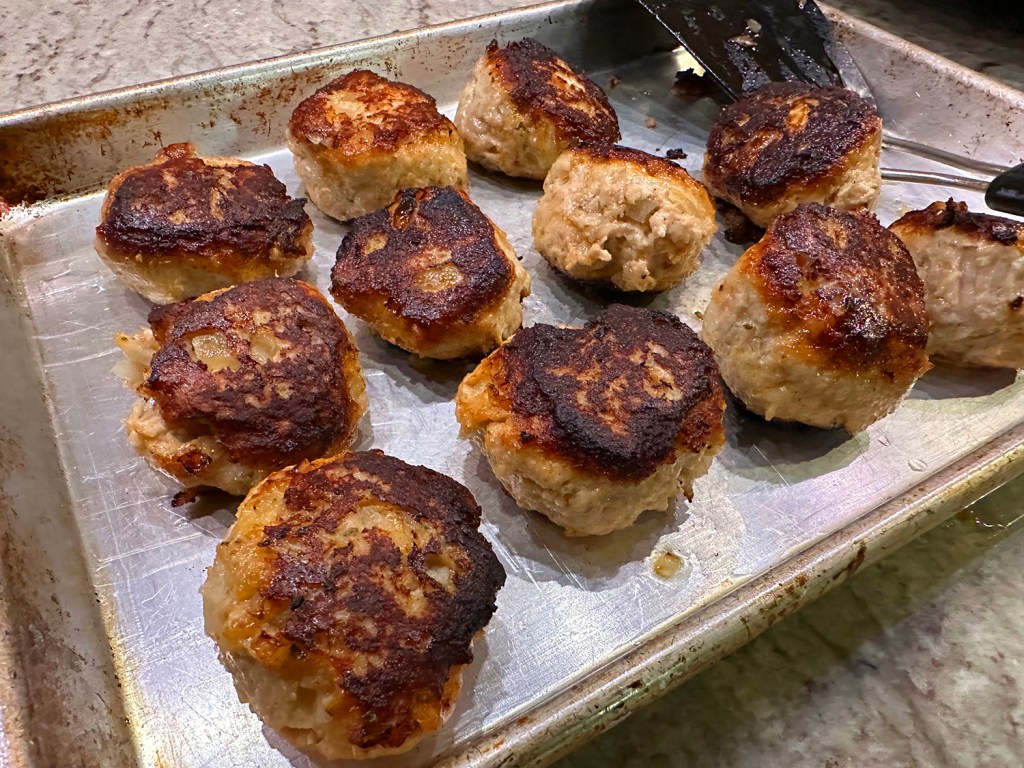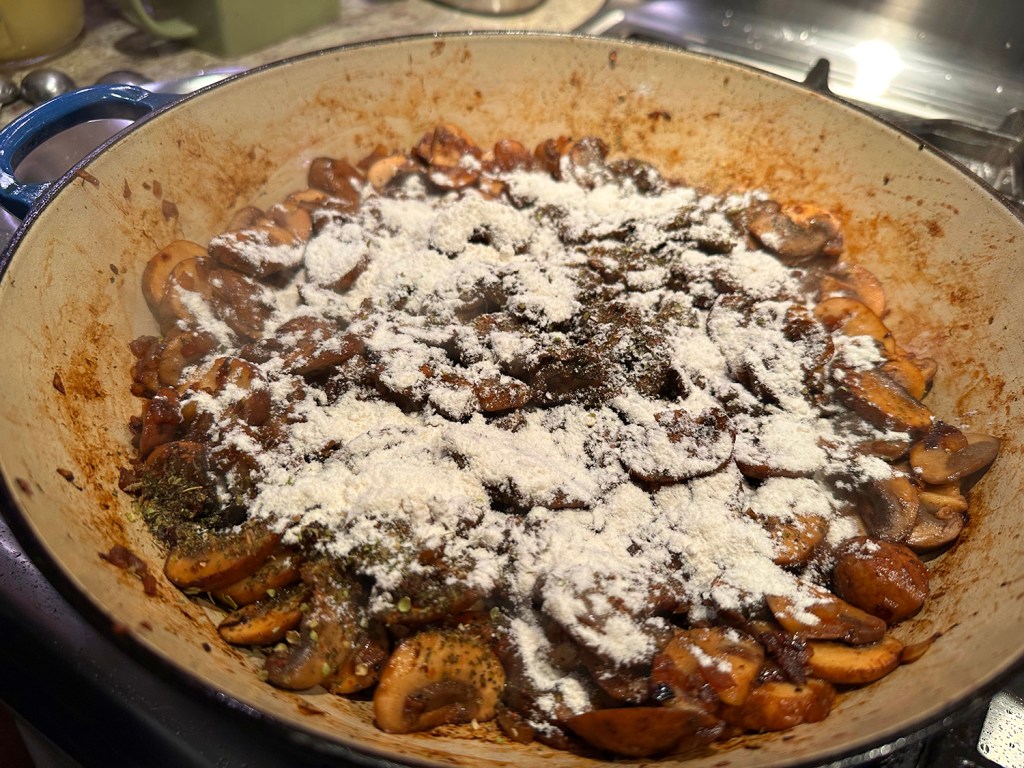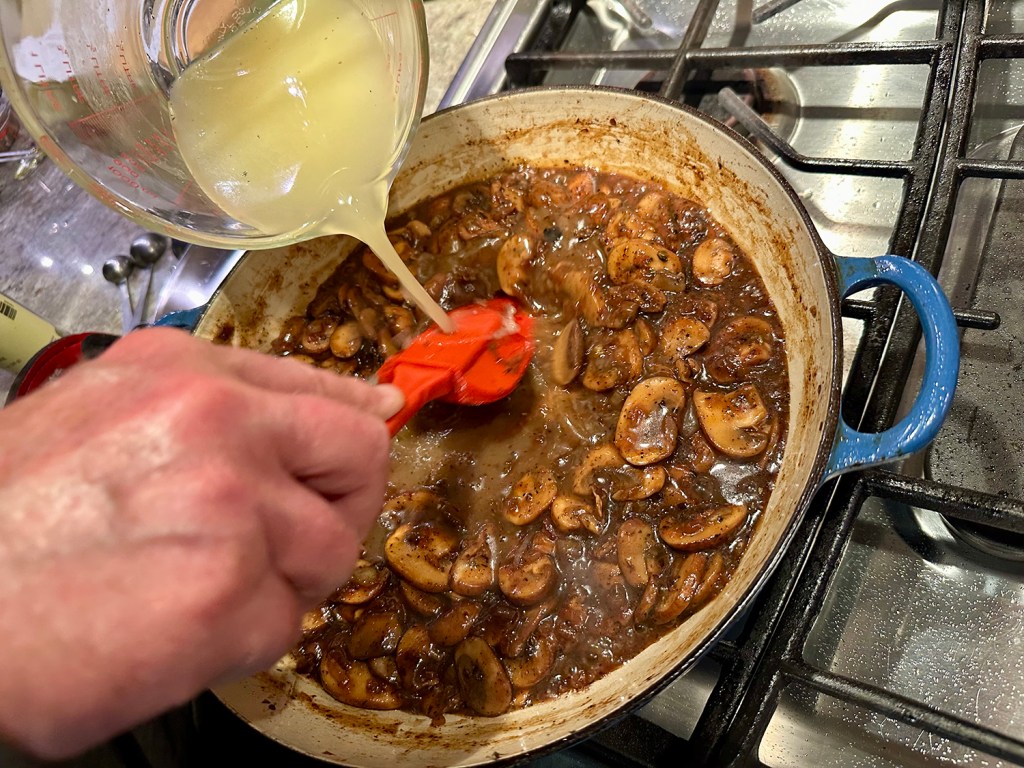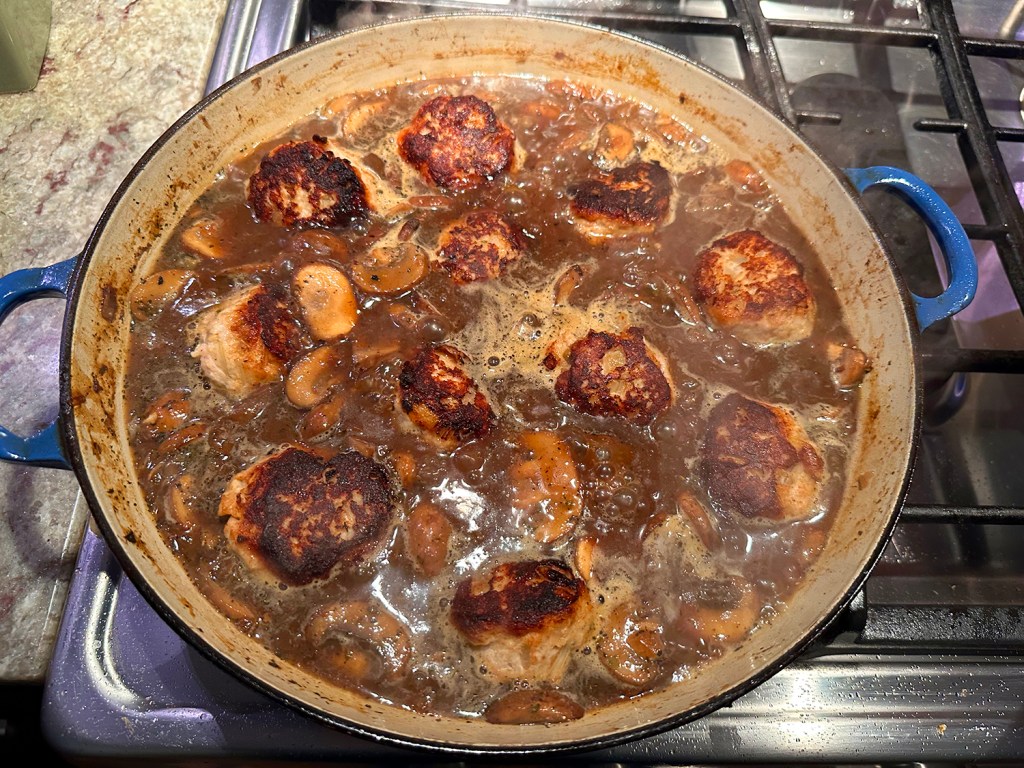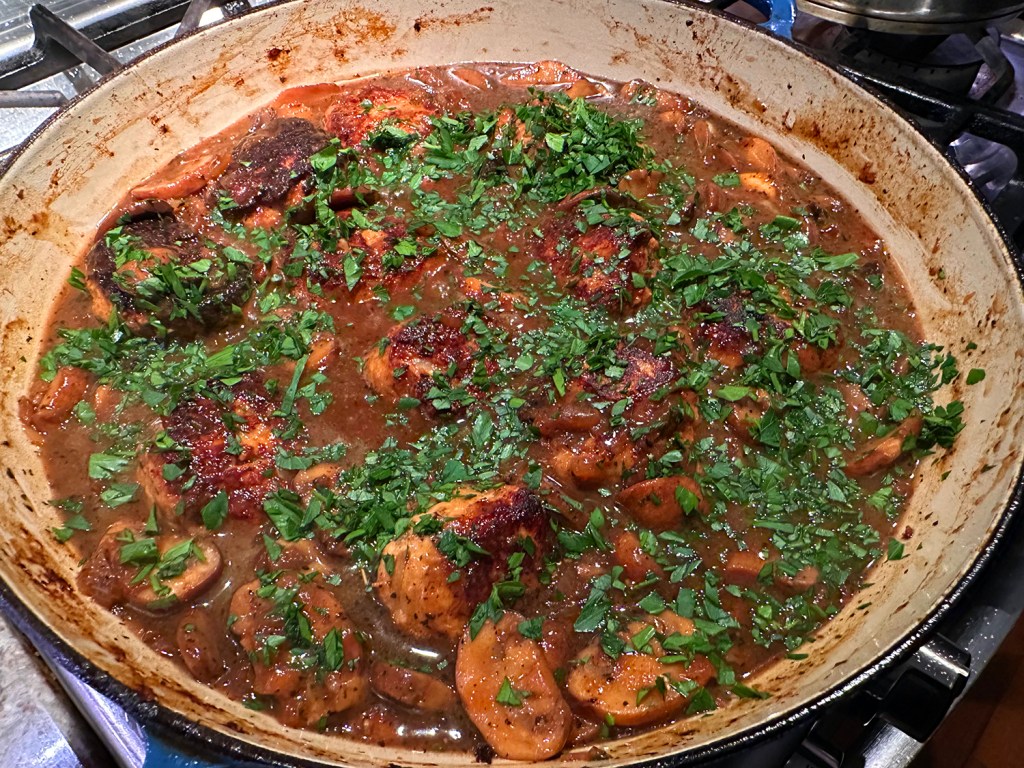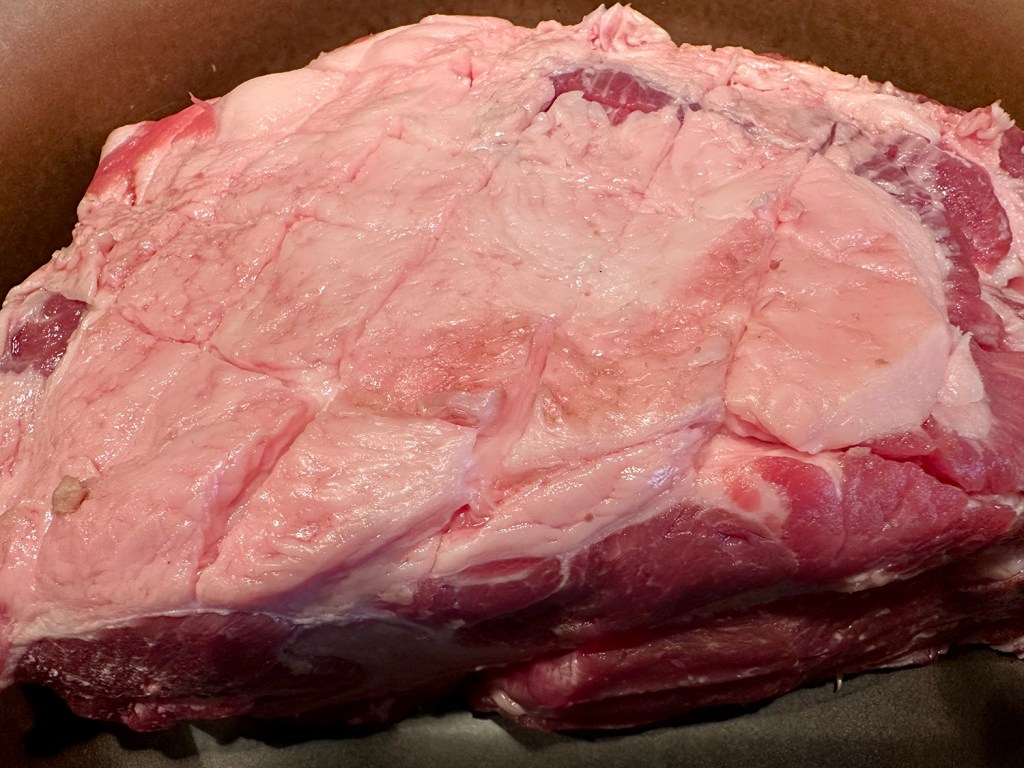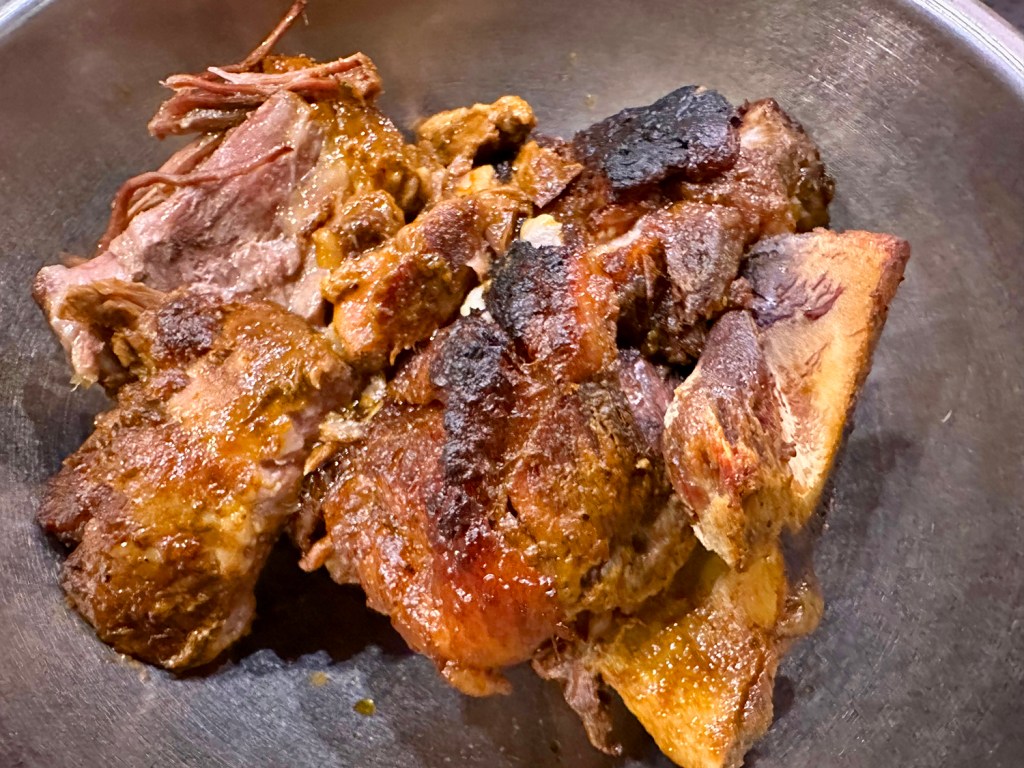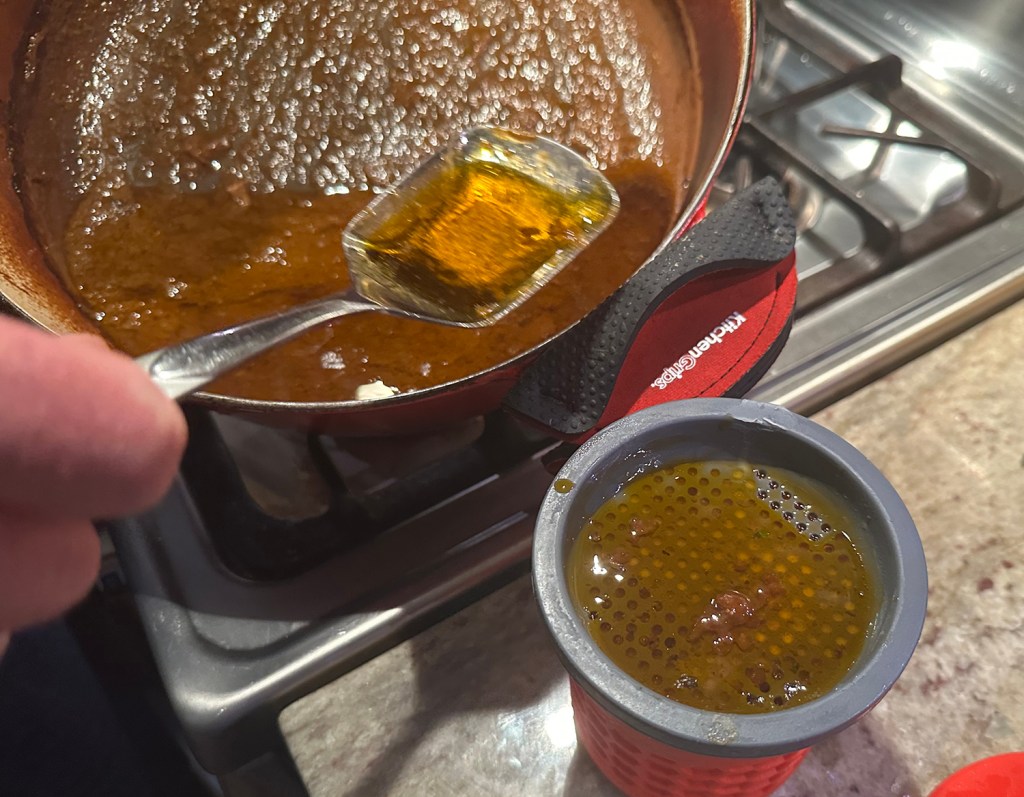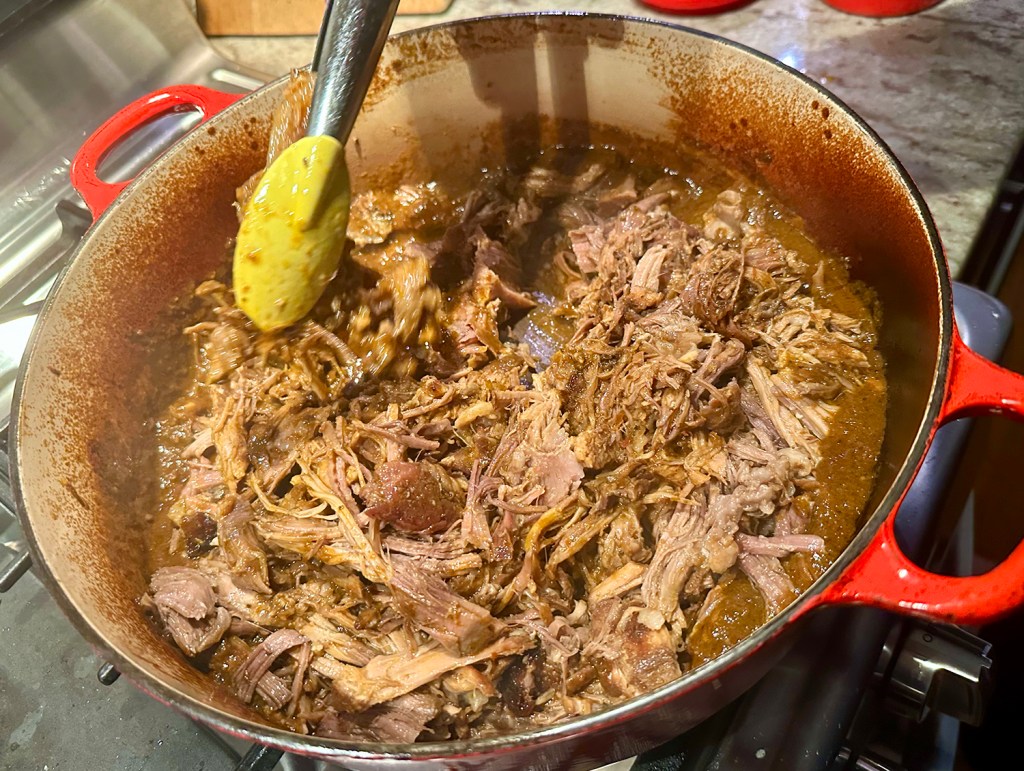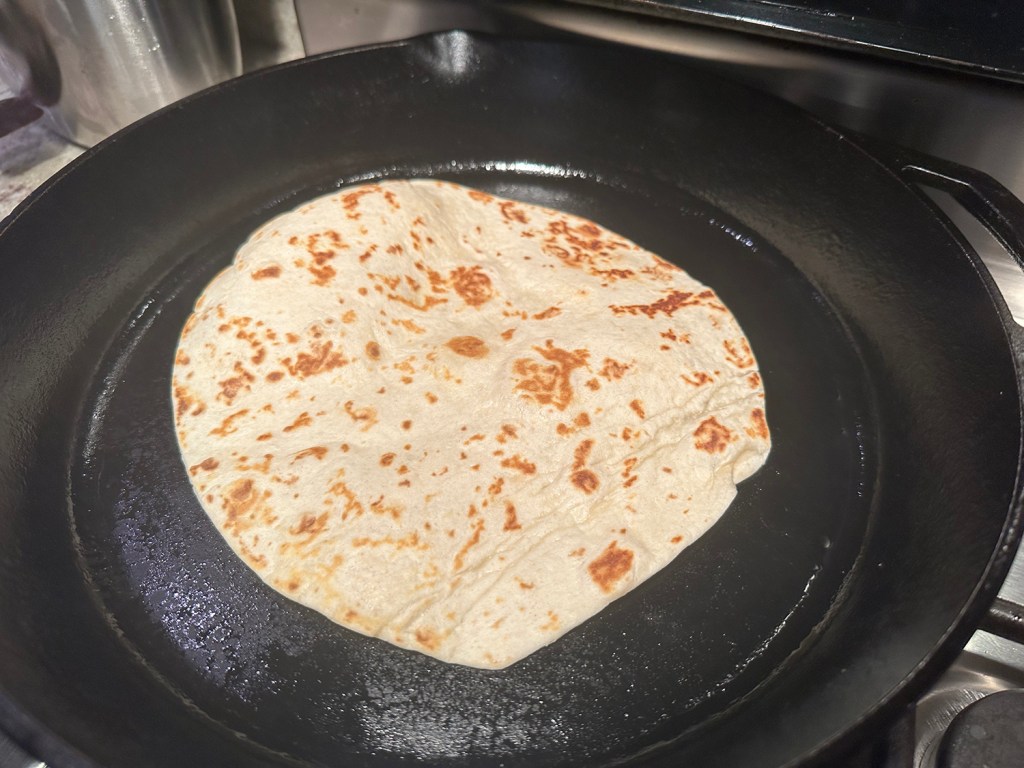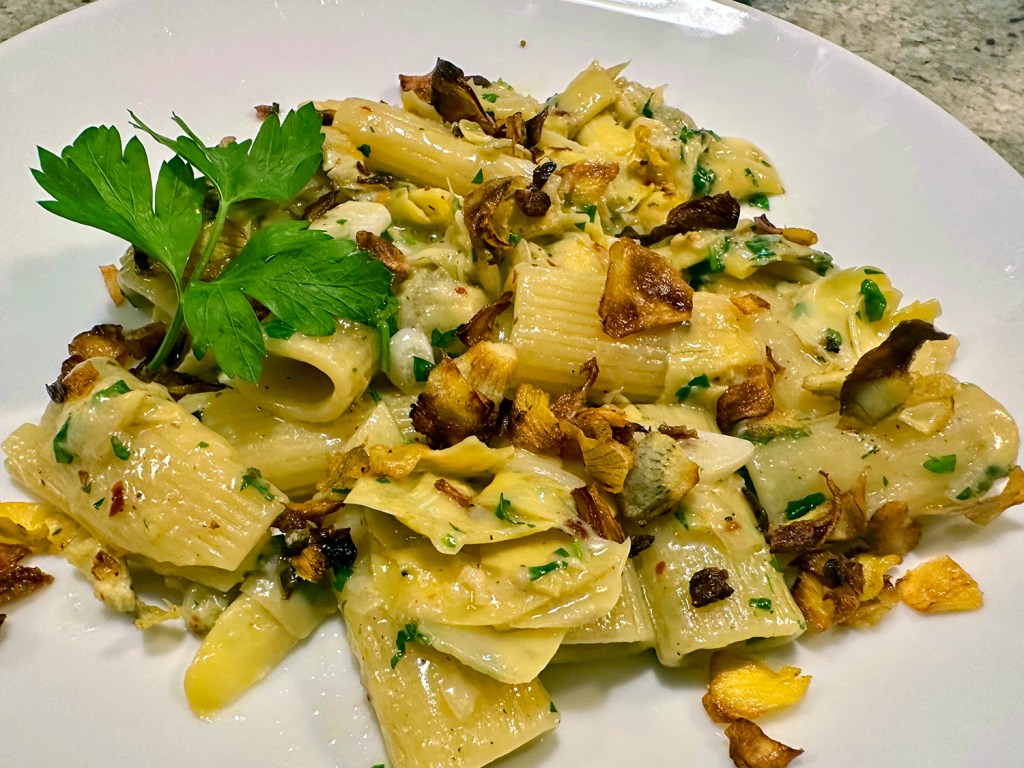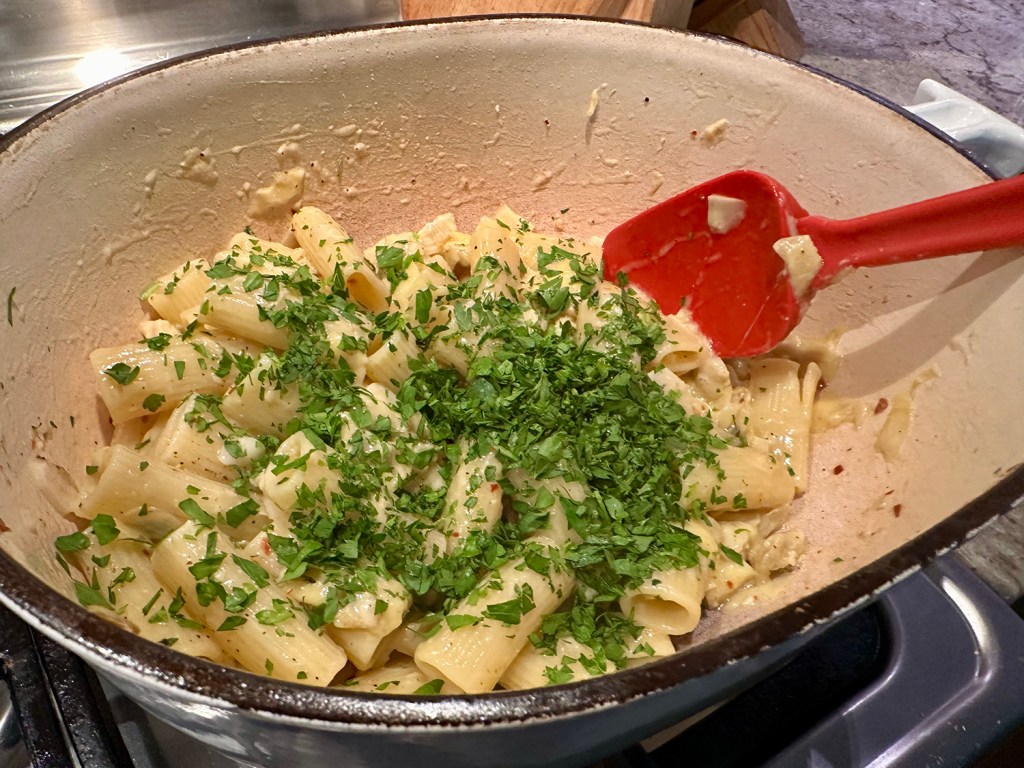A very interesting combination, with amazing results! Now you might say this takes a lot of time and effort to only get two to three servings—and we would have to agree. But sometimes when we have a long non-scheduled afternoon ahead of us, we find a culinary challenge fits our MO. Plus, we love duck! OK, maybe “masochist” might be an appropriate adjective?
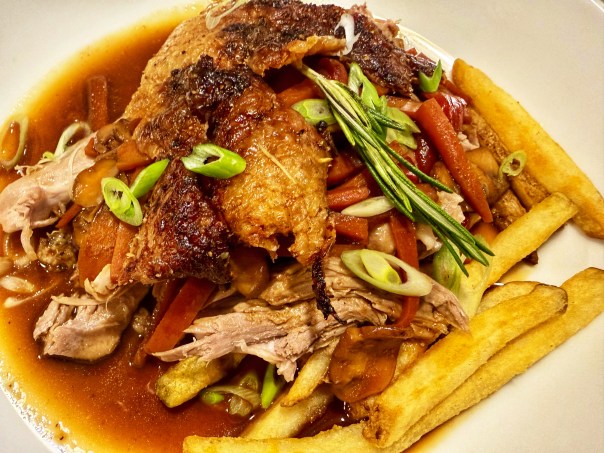
Typically a duck is scored in order to render the fat properly. However, in this recipe, there is no need to prick the skin beforehand due to the long cooking time. Plus, après roasting, the skin of the breast is removed from the meat and is fully crisped at a higher temperature just prior to serving.
Under the Ingredients category, we made a few changes, starting with the fact that our bird was 7 pounds instead of 5 — providing 3 full servings. Also, unable to buy 4 ounces of loose creminis, we had to purchase an 8-ounce package and decided to use them all. Finally, we garnished our dish with diagonal slices of scallion (already had on hand) as opposed to 1-inch pieces of chives.
The original Directions were a bit wonky and unclear in places, so we altered them for clarification. For instance, instead of draining the fat every hour (the duck roasts for 4 1/2 hours), just place the bird on a rack in the roasting pan, then at the end of cooking you can remove the fat all at once. (Of course it is liquid gold, so save for future culinary endeavors. We ended up with about 3 1/2 cups worth!)
Ducks and chickens belong to the avian family, yet their anatomical structures exhibit some significant differences. The texture also differs; duck tends to be denser and more succulent, while chicken can be more delicate and prone to shredding.
Ducks possess dark meat, which has a higher fat content and a more robust flavor. This fat contributes to the bird’s juiciness and tenderness. However once you pick it from the carcass, make sure to wrap the meat tightly in tinfoil and keep warm while you finish making the dinner, so that it won’t dry out.
This dish gives a huge nod toward the New Orleans’s legendary street food tradition of gravy-soaked po’ boys laden with French fries; usually NOT my go-to option. Home cooks can substitute shoestring potatoes, mock frites or hash browns. Either way, it’s told, the interplay between the moist meat, luscious sauce and crisp potatoes is nonpareil.
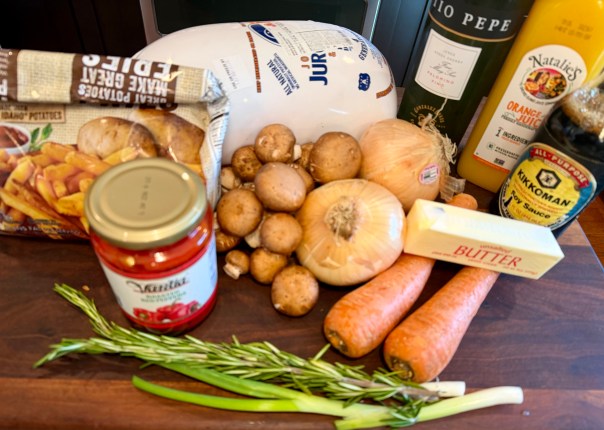
Slow Roasted Duck with Orange-Sherry Sauce
Ingredients
- 1 lb. yellow onions, peeled and coarsely chopped
- ½ stick unsalted butter, melted
- 1 5-lb duck, rinsed and patted dry
- Salt
- Freshly ground pepper
- 2 large rosemary sprigs
- 2 cups fresh orange juice
- 1 cup dry sherry
- ½ cup soy sauce
- 2 medium carrots, peeled and julienned
- 4 oz. cremini or white button mushrooms, trimmed and sliced thin
- 2 Tbsp. unsalted butter
- 17-oz. jar roasted red peppers, rinsed, drained and cut into strips
- 2 fresh chives, cut into 1-inch lengths
- Hash browns, OR French fries
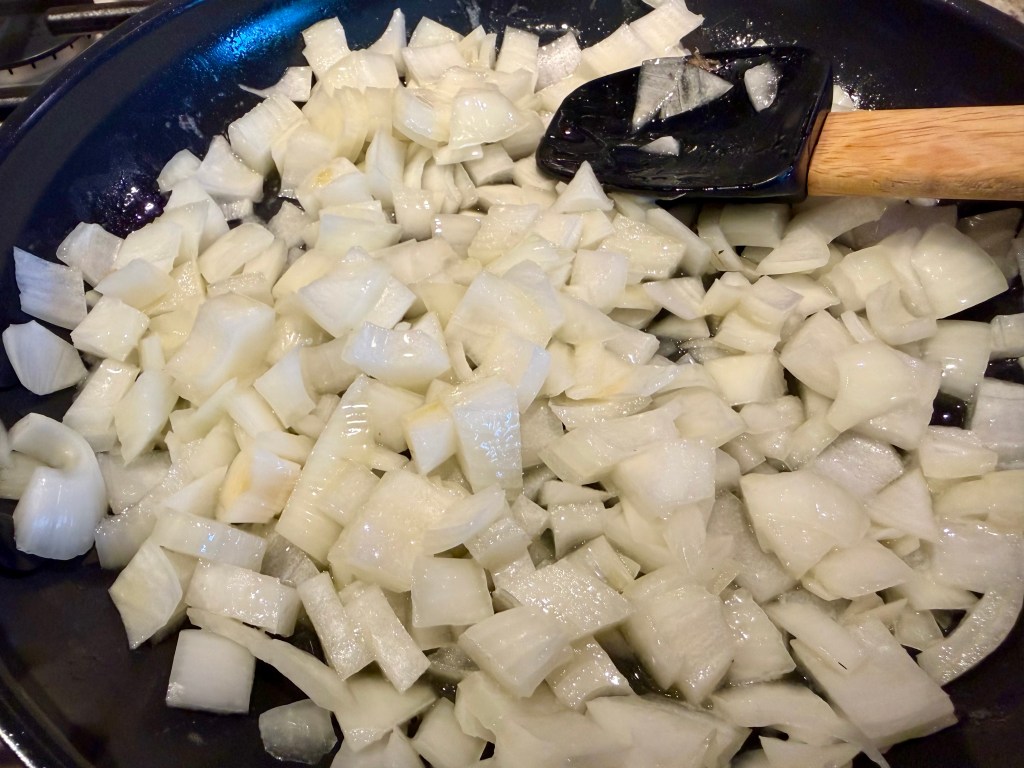
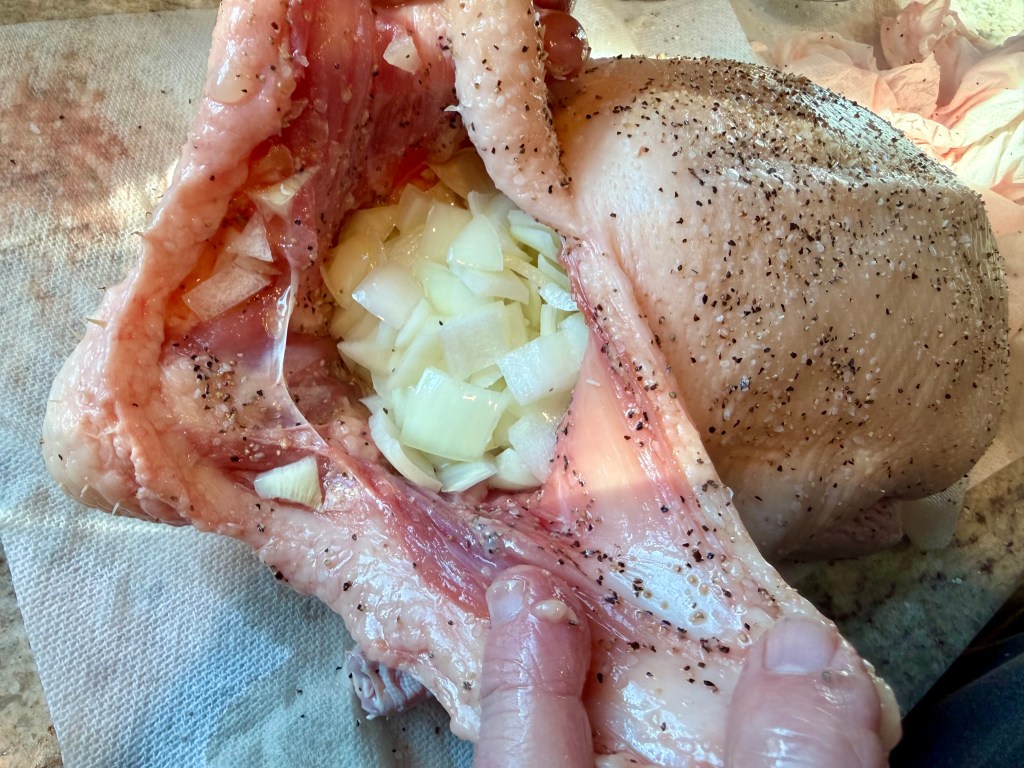
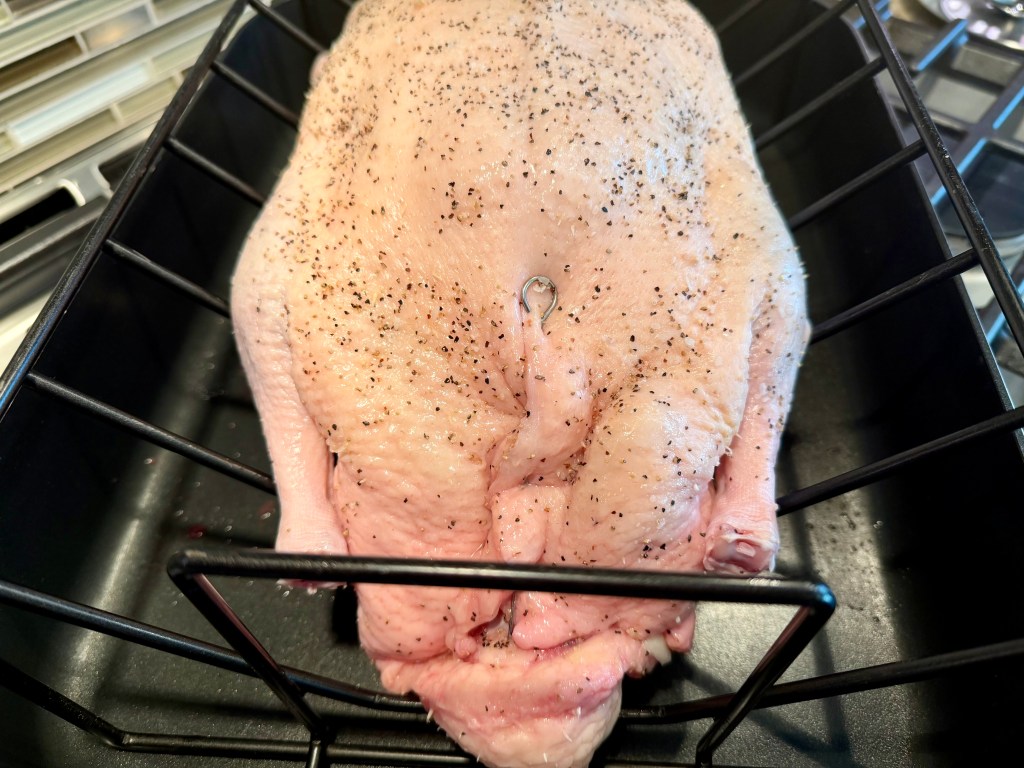
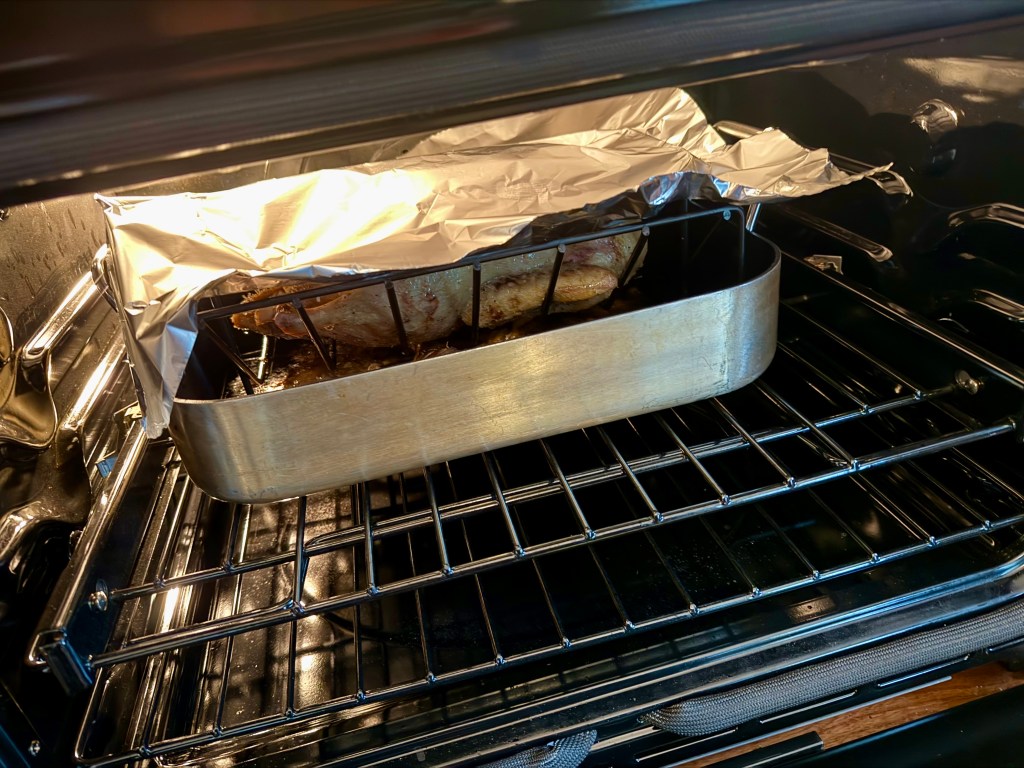
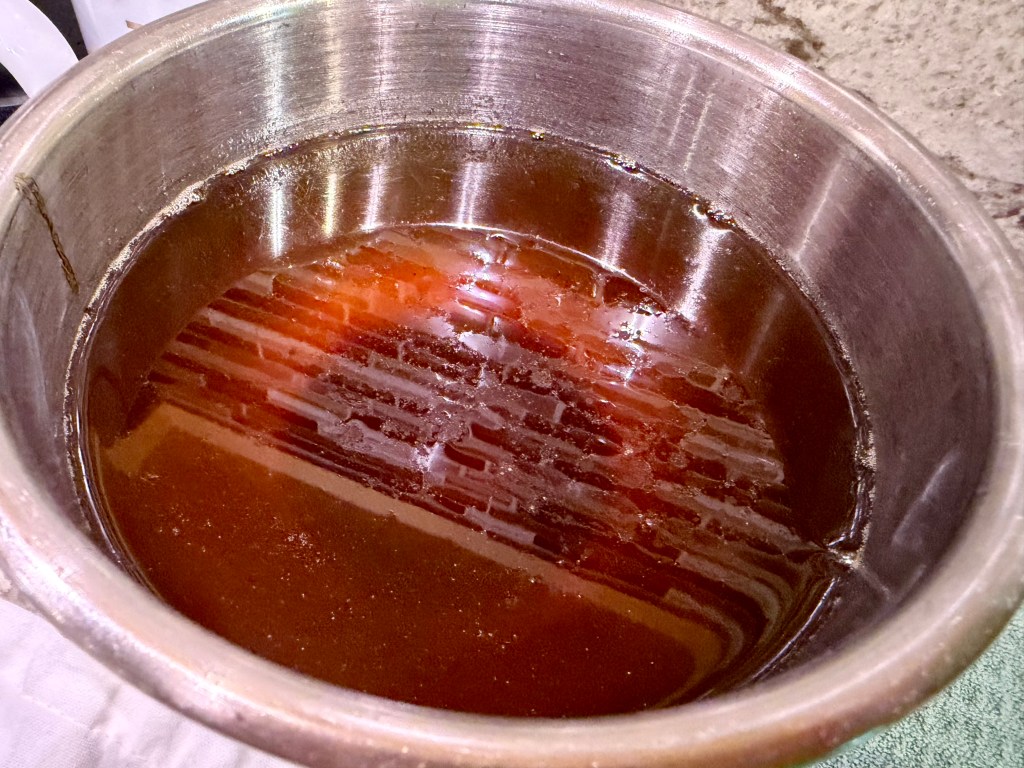
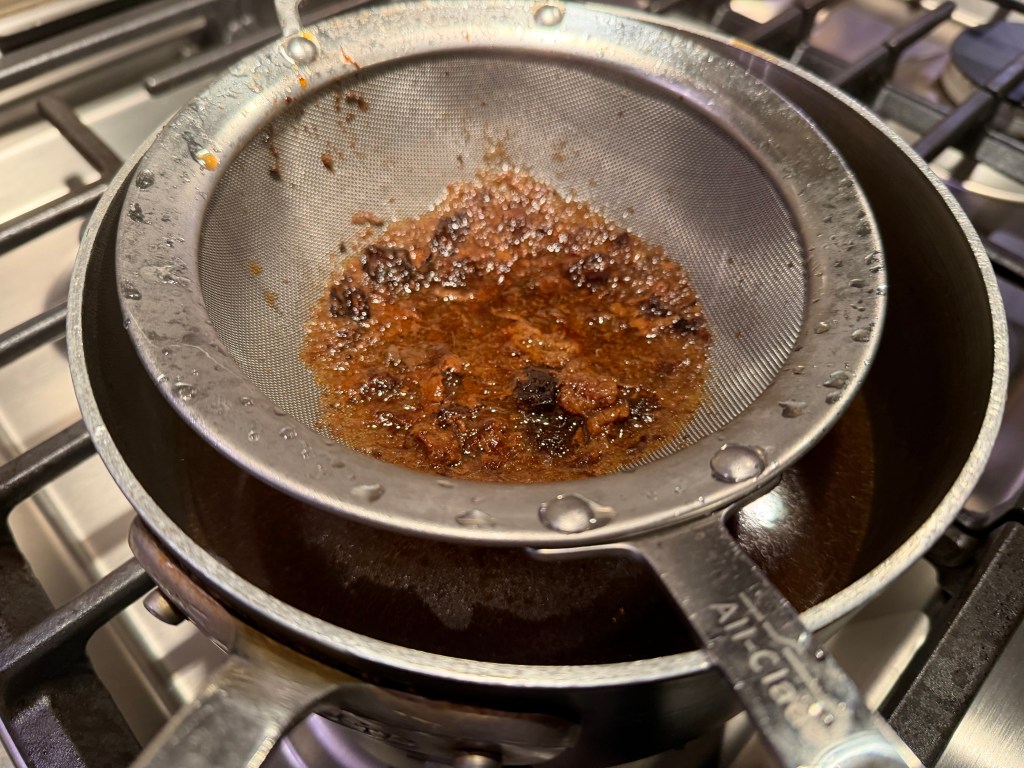

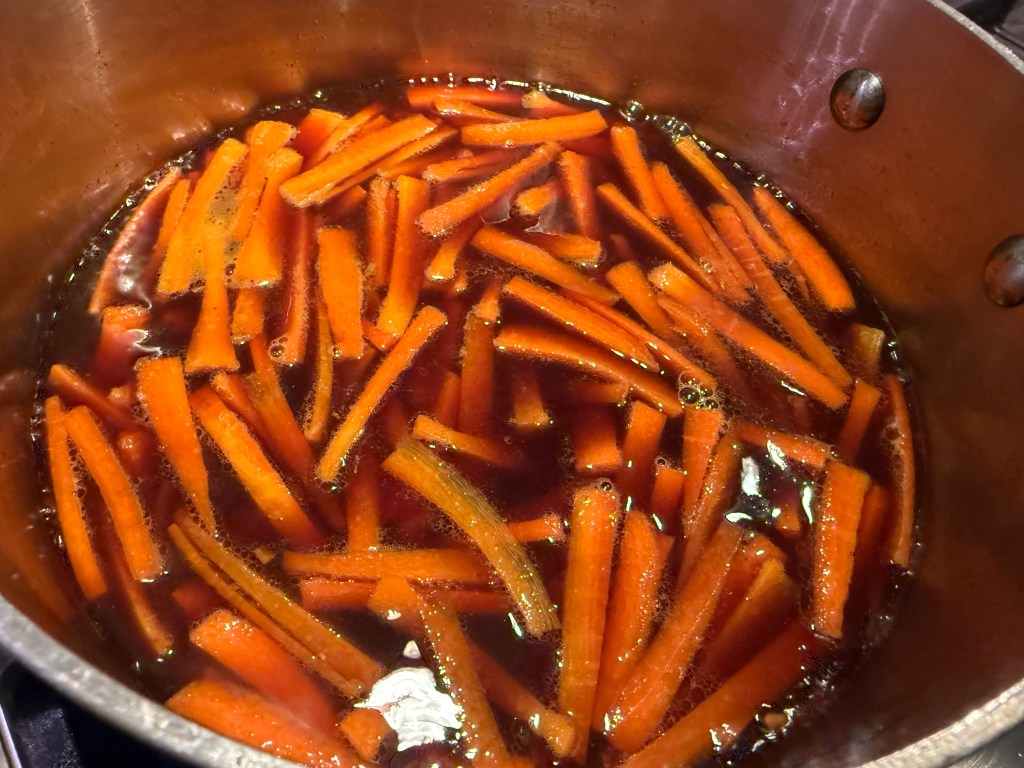
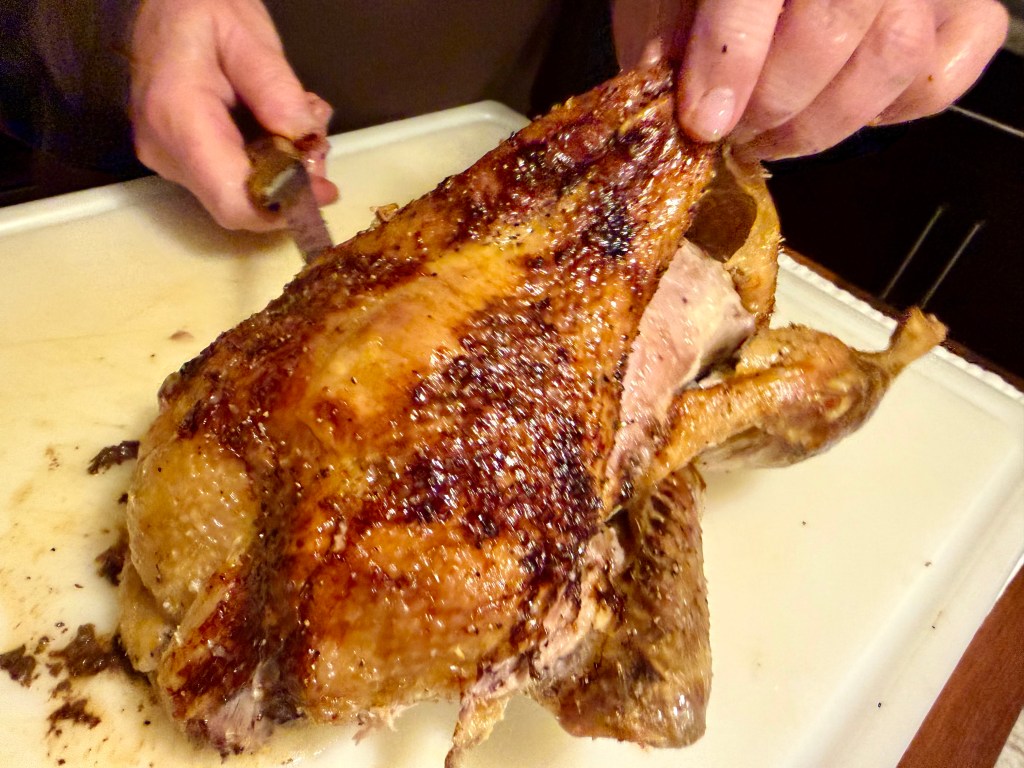

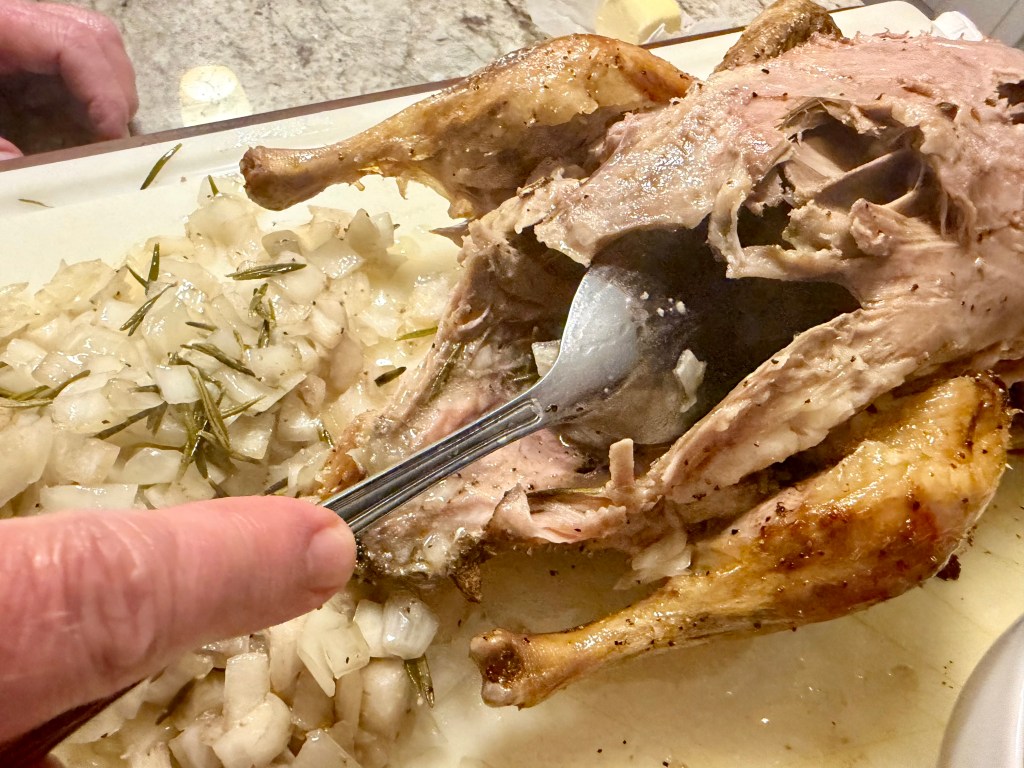
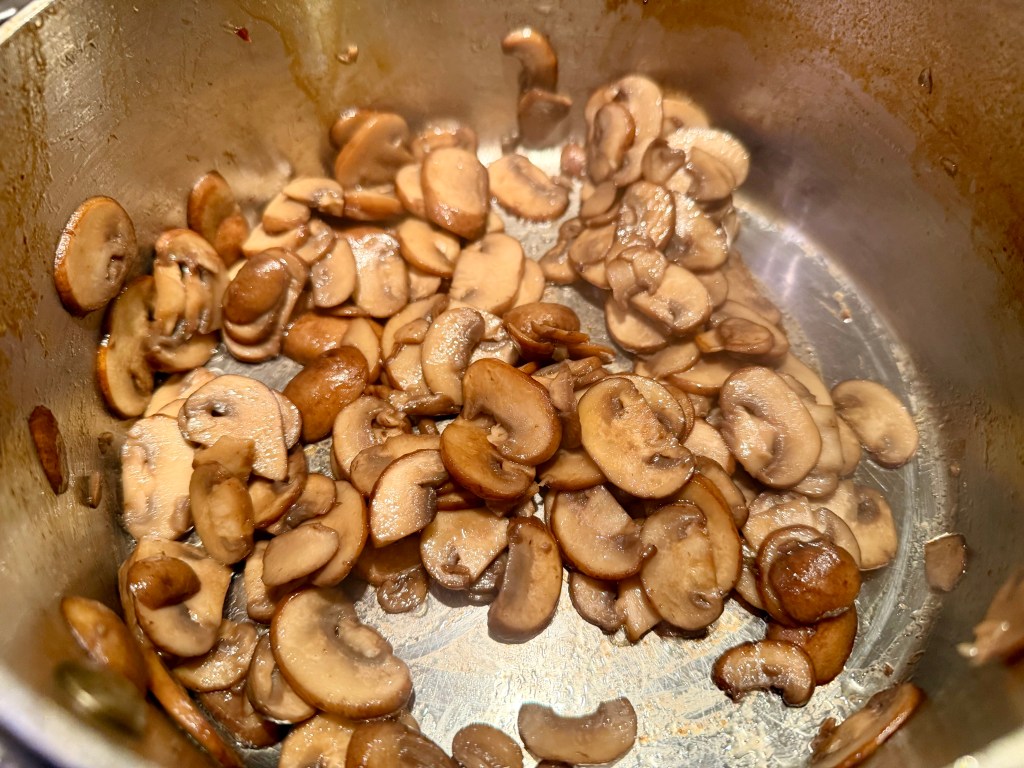
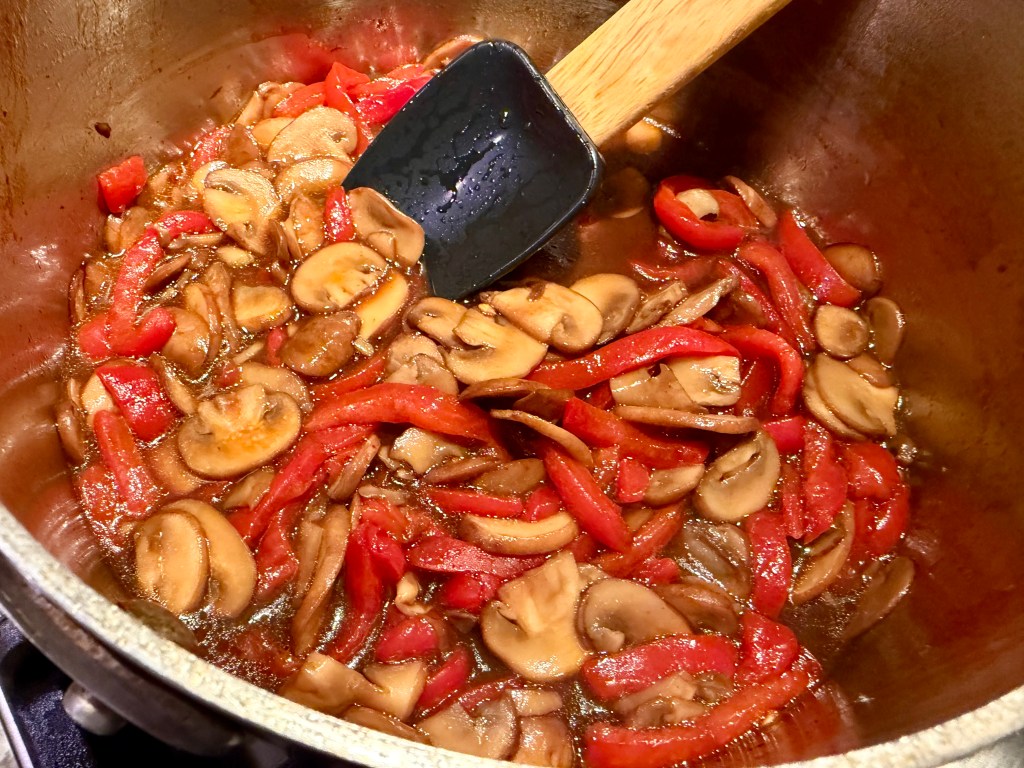
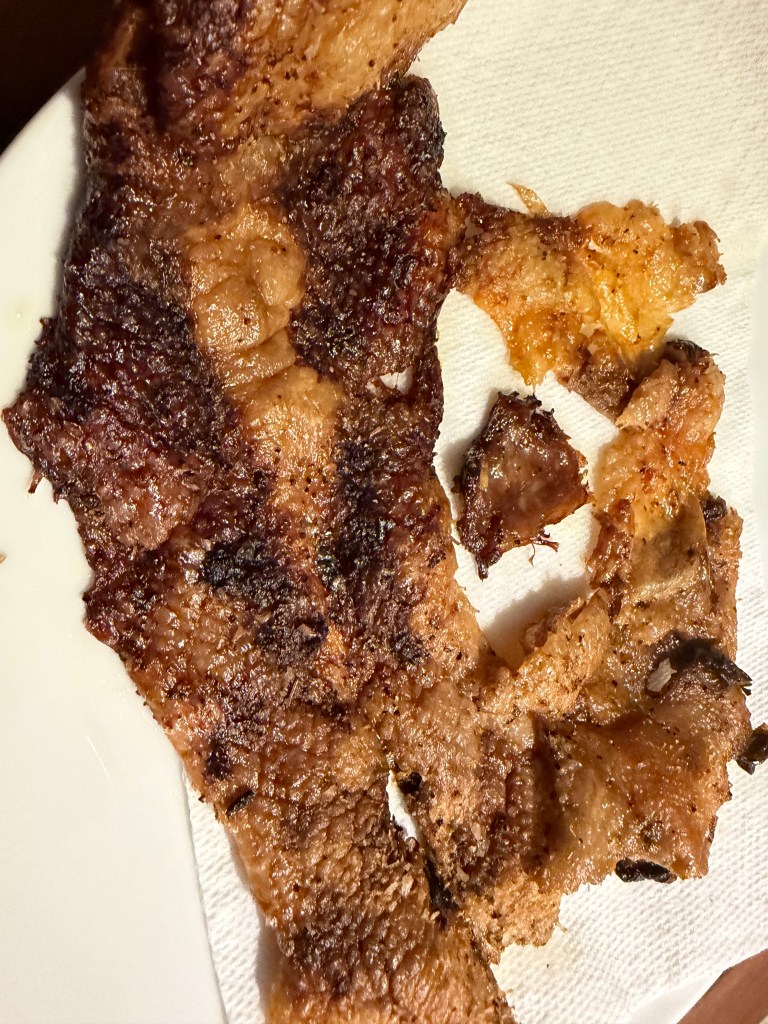
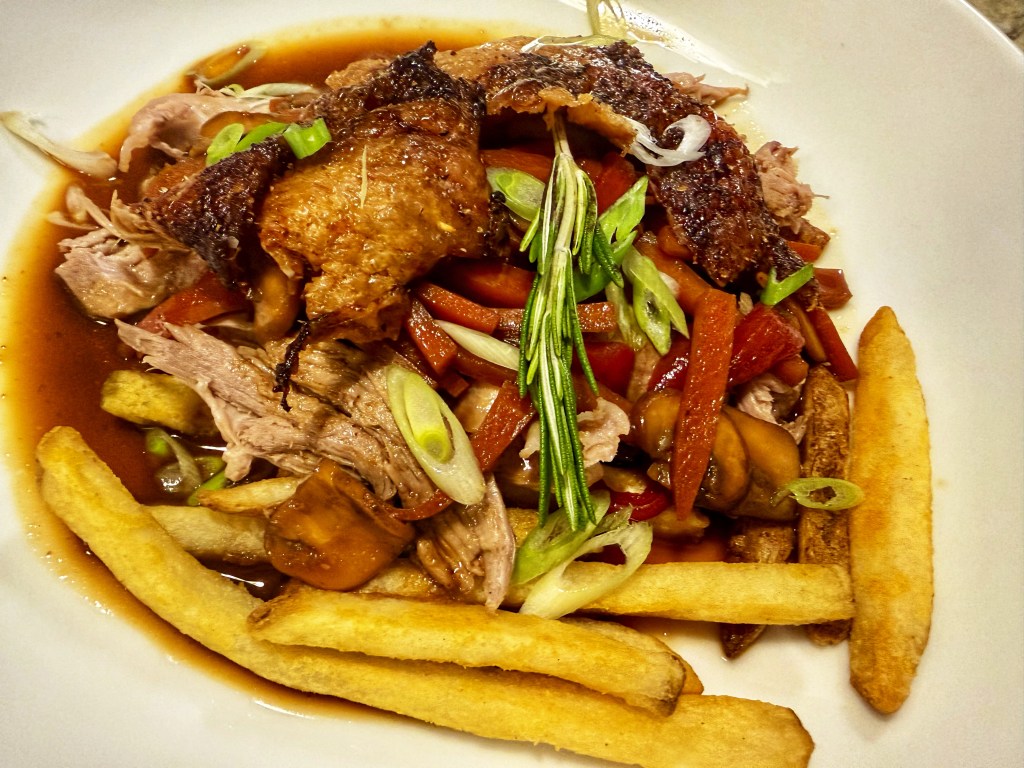
Directions
- Heat oven to 500 degrees. In a large bowl, toss onions with melted butter. Season duck inside and out with salt and pepper. Place rosemary sprigs inside duck’s cavity and then tightly pack with buttered onion mixture.
- Place duck in medium-size roasting pan, and roast for 10 minutes. Reduce oven temperature to 300 degrees and cover pan loosely with foil. Roast for about 4½ hours, draining fat every hour.
- Remove pan from oven and carefully discard as much fat as possible with a ladle. Add orange juice, sherry and soy sauce. Return pan to oven and roast uncovered for 30 minutes. Transfer duck to a platter and let cool slightly. Pour pan juices (about 4 cups) into a saucepan, discarding any pieces of skin. Skim off fat and bring to a boil over medium-high heat.
- Add carrots and reduce to 1½ cups, strain and keep on the side. In same pan, sauté mushrooms with 2 tablespoons butter until brown. Add red peppers and briefly sauté, then add reduced sauce. Season to taste with salt and pepper. Keep warm over low heat.
- Remove onions and rosemary from duck’s cavity and discard. Remove meat from bones. Place skin from duck breasts onto rimmed baking sheet and bake at 400 degrees until skin starts to foam, about 5 to 10 minutes. (Ours took 13 minutes to crisp up.)
- Cover bottoms of individual plates with sauce and top with either pasta, shoestring fries, hash browns or unsalted potato chips. Place a generous amount of duck meat on top, then garnish with crispy skin, vegetables and chives or scallions.
Adapted by a recipe from Greg Sonnier; originally by Pableaux Johnson








